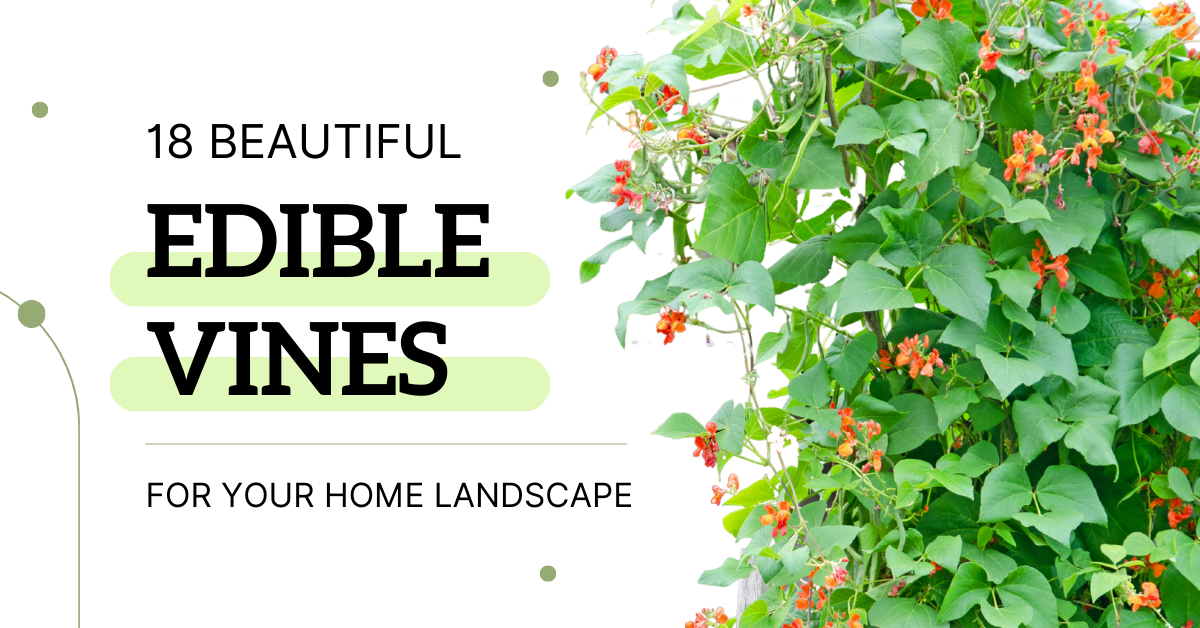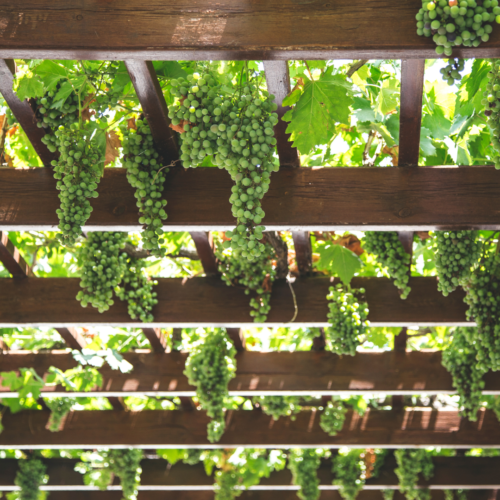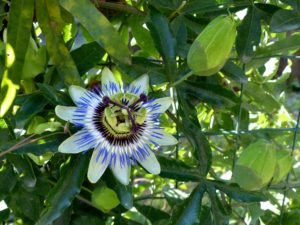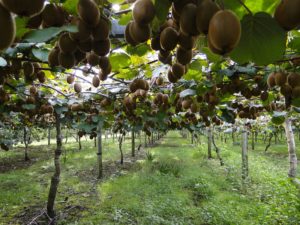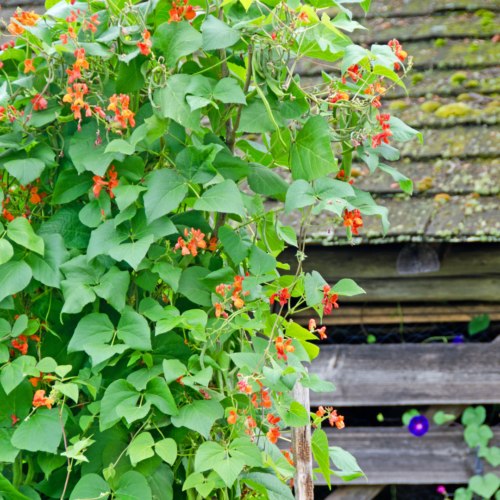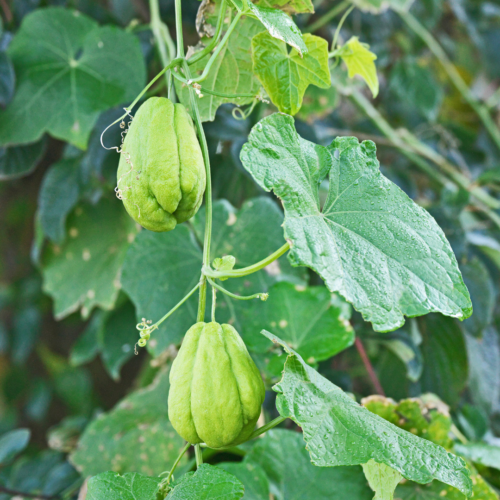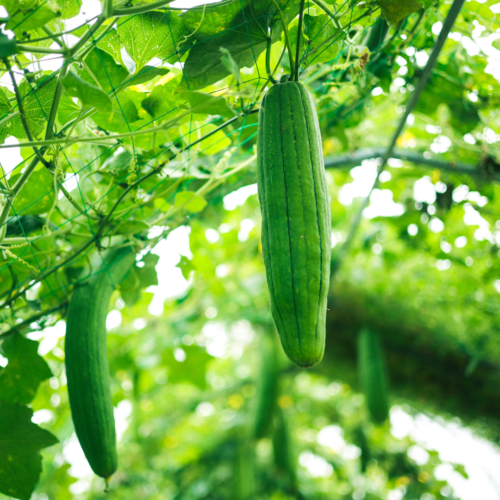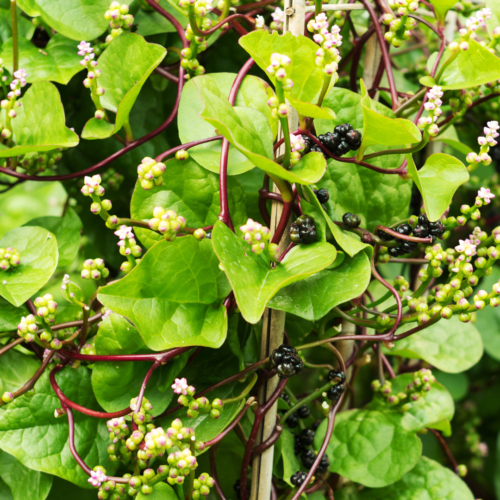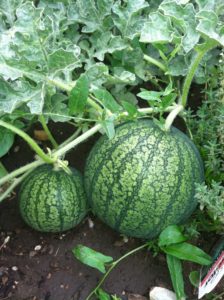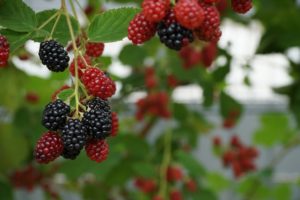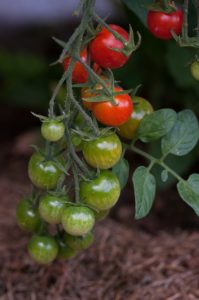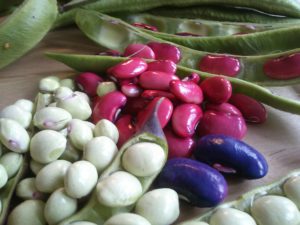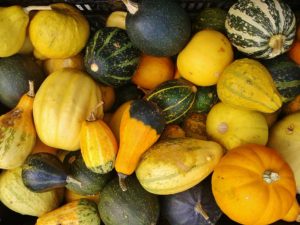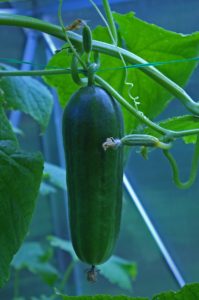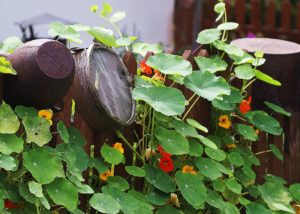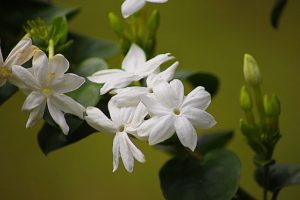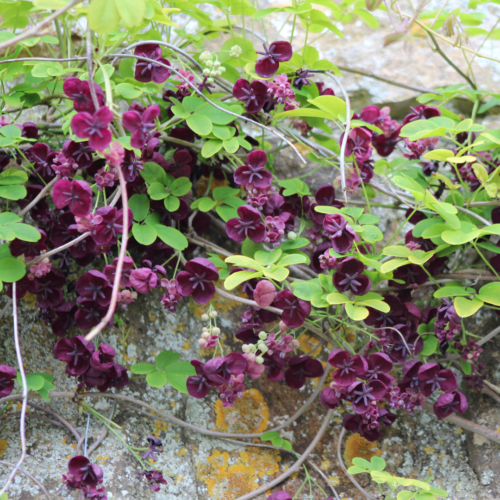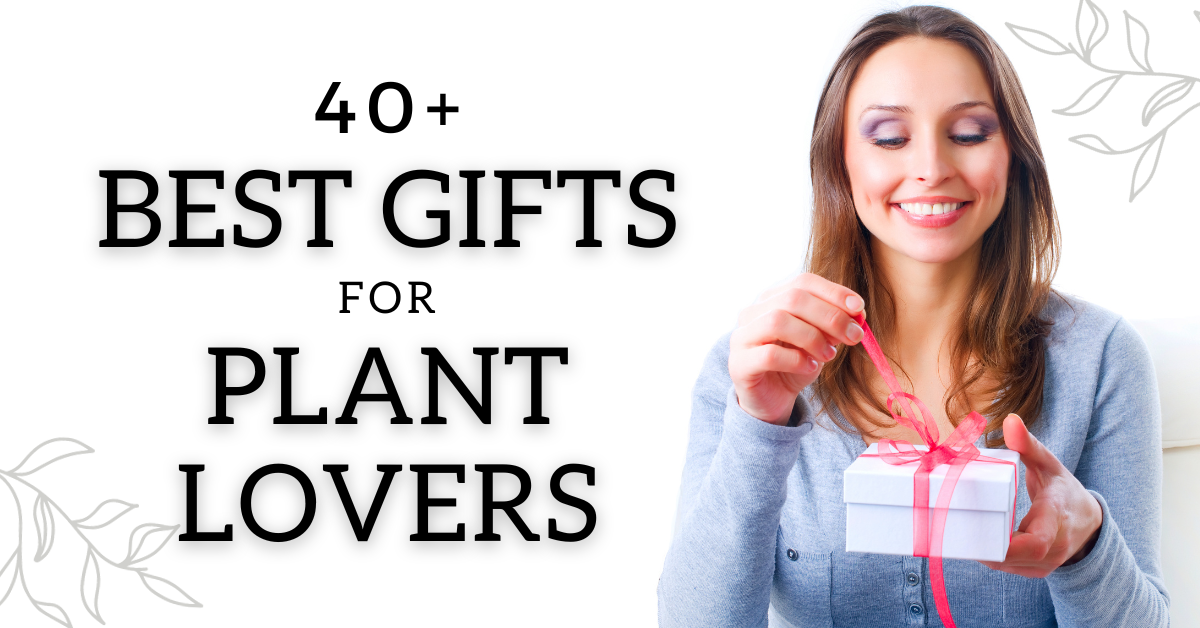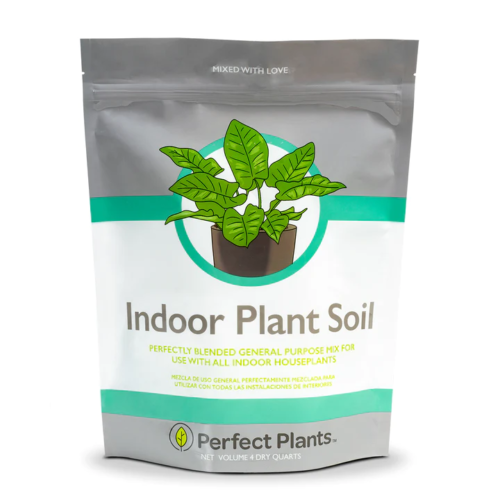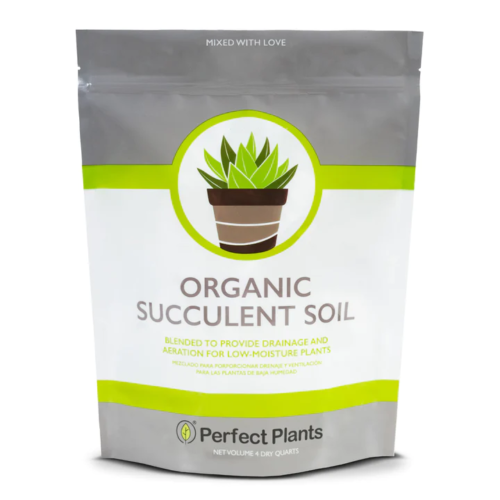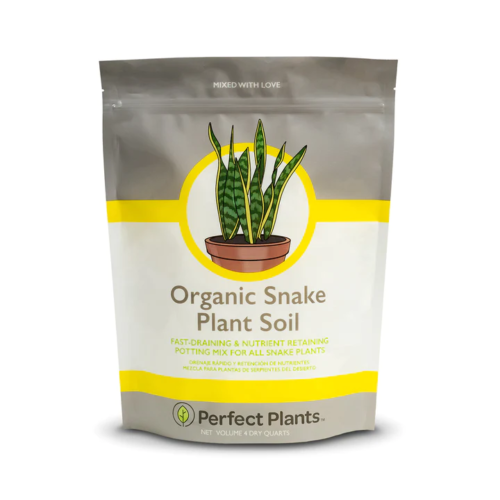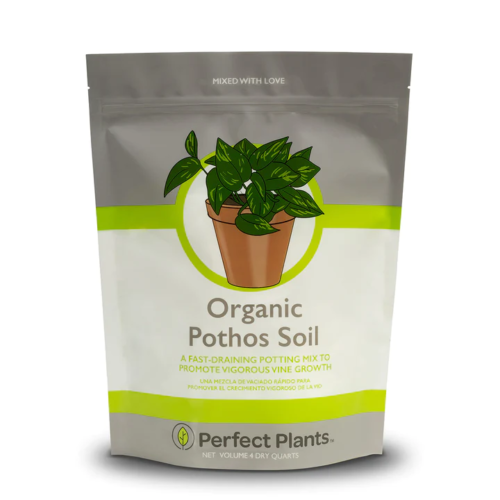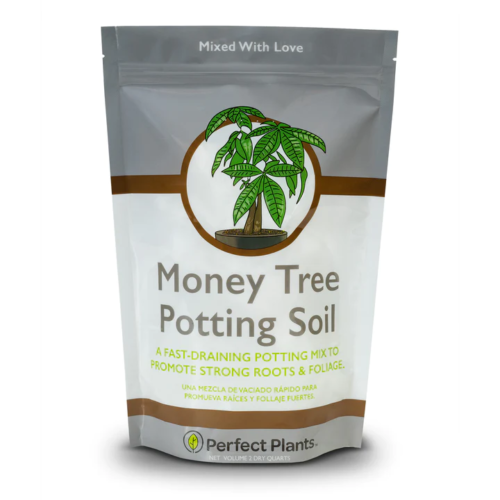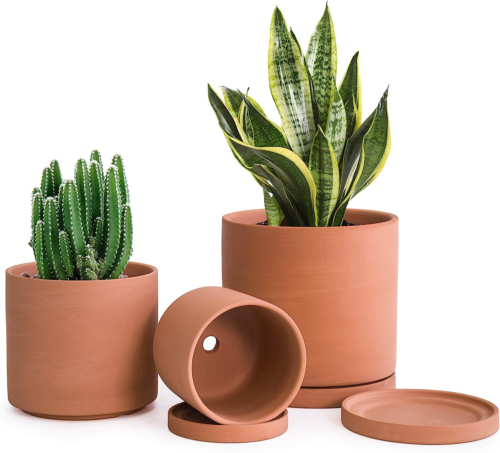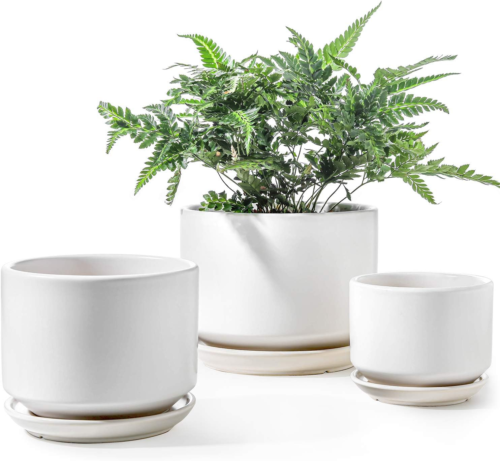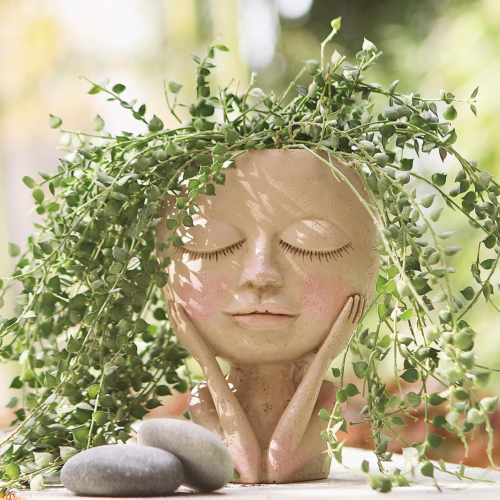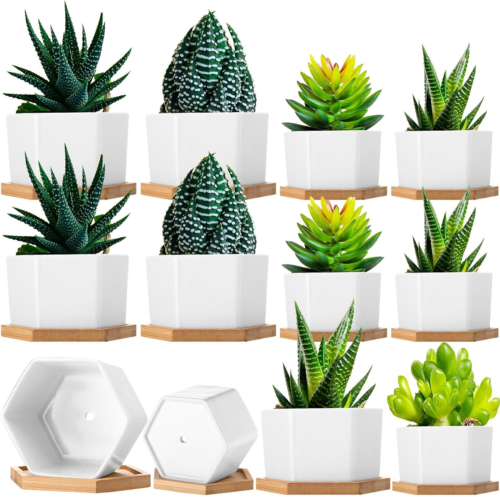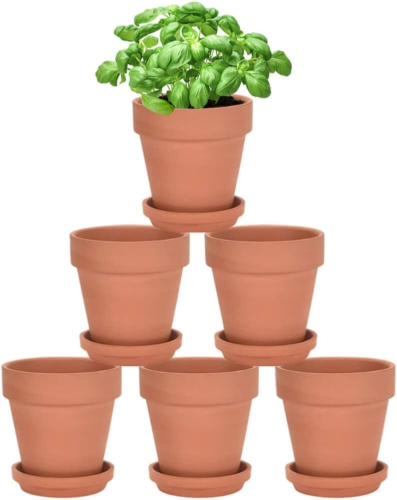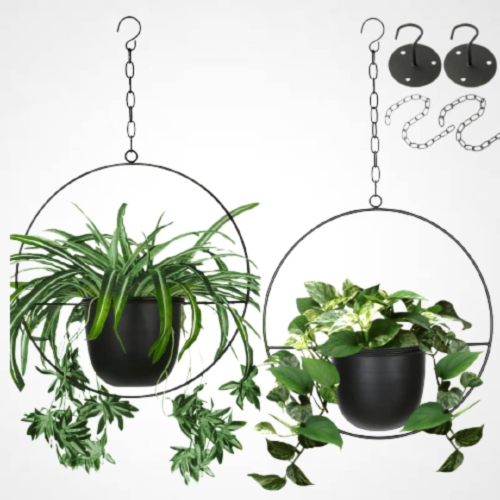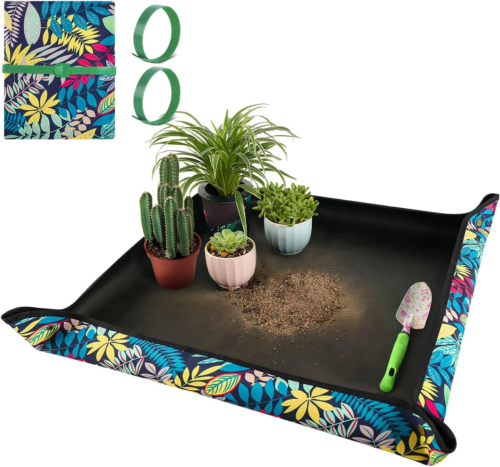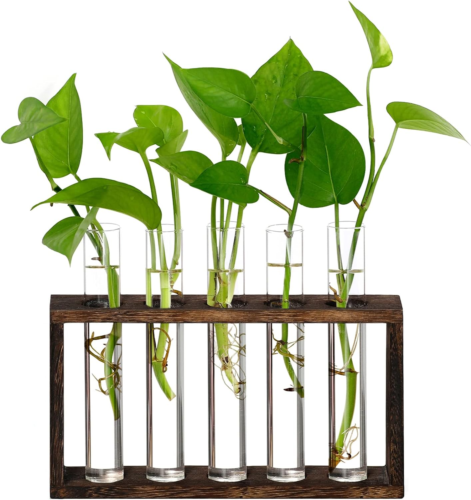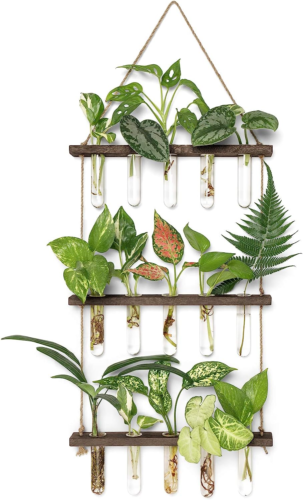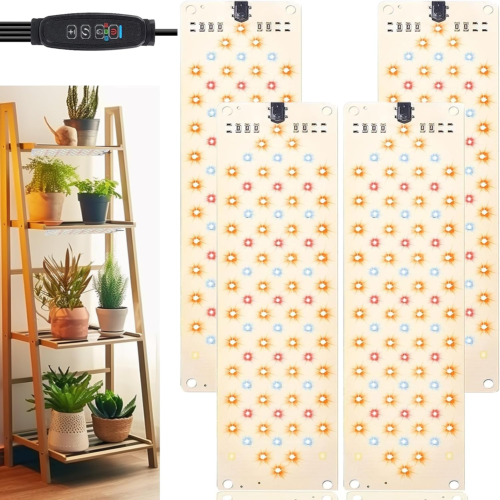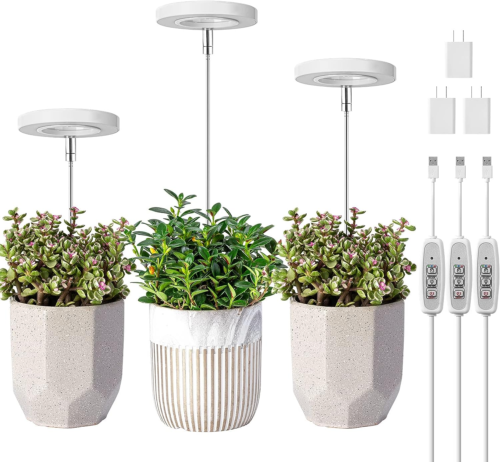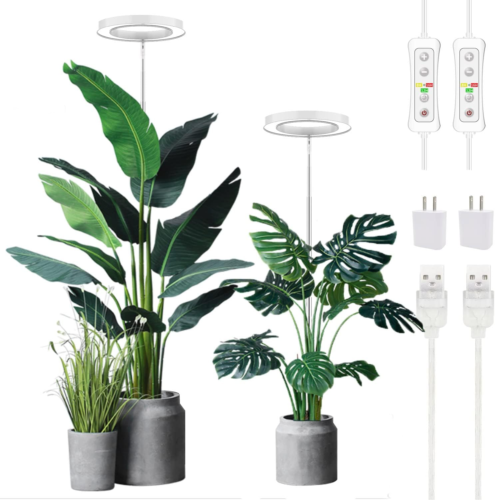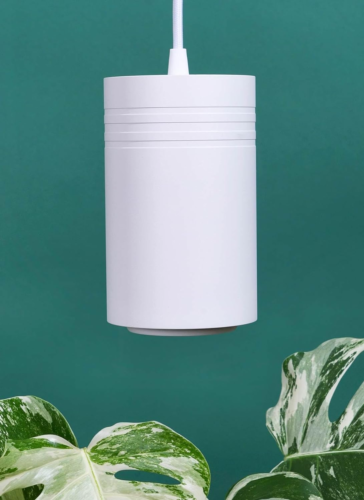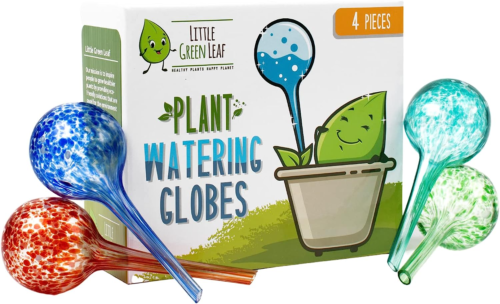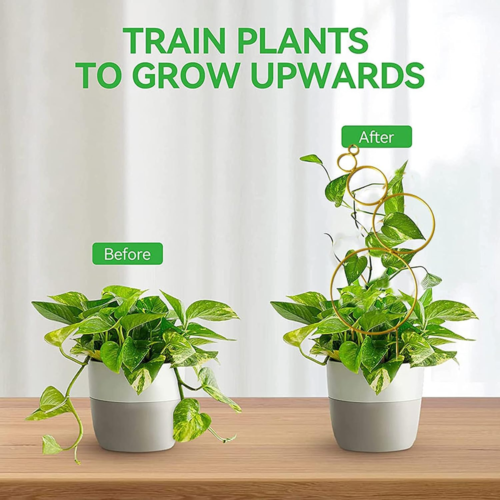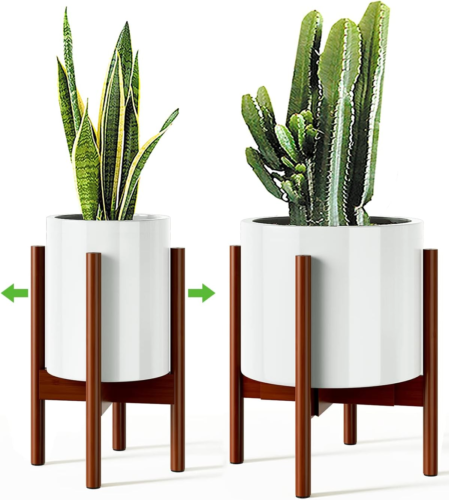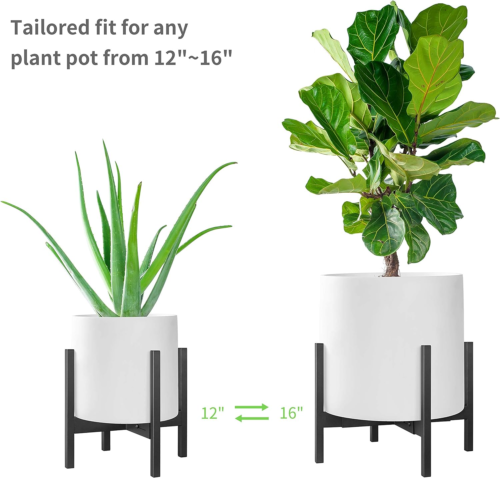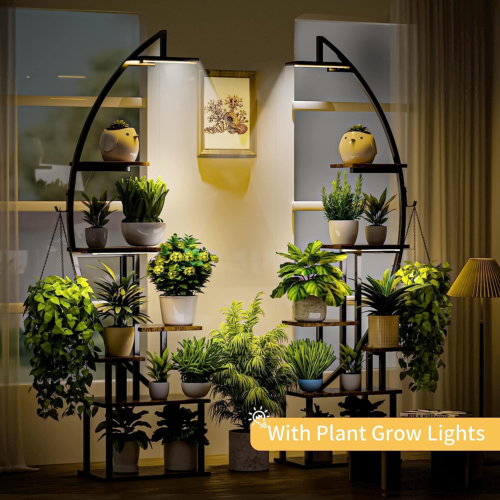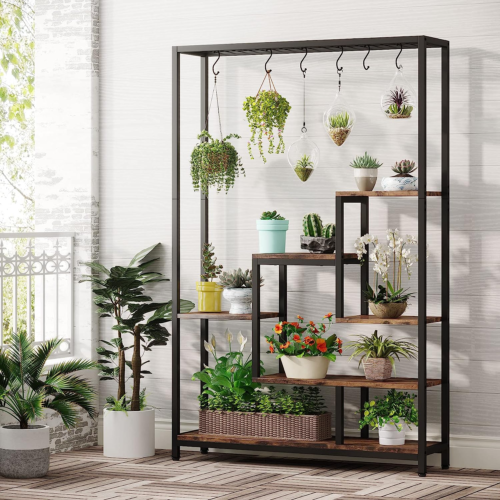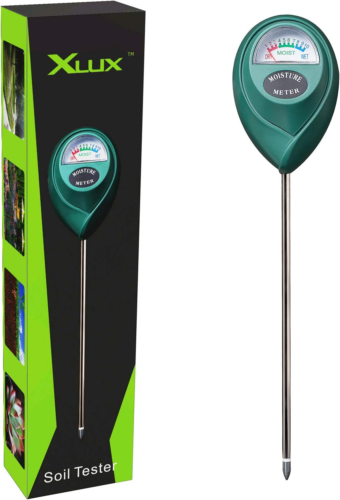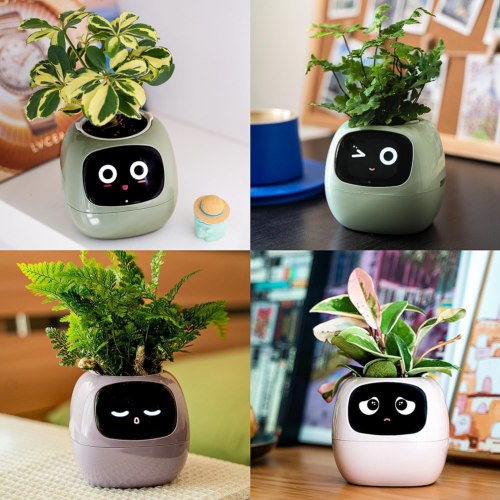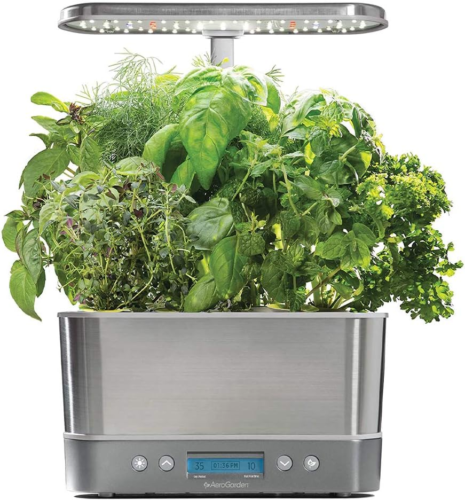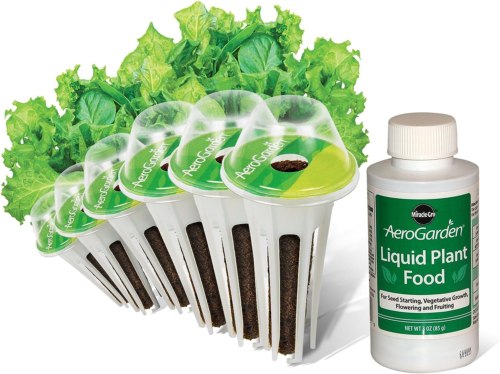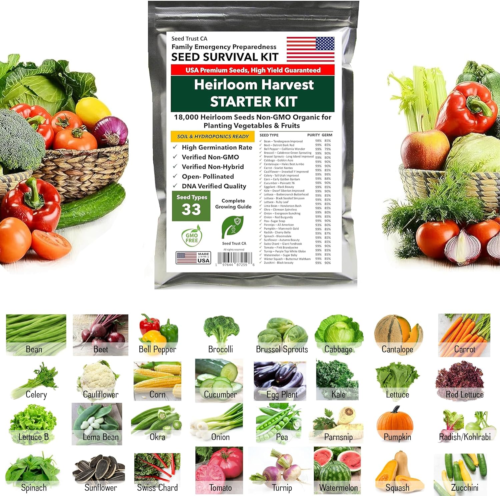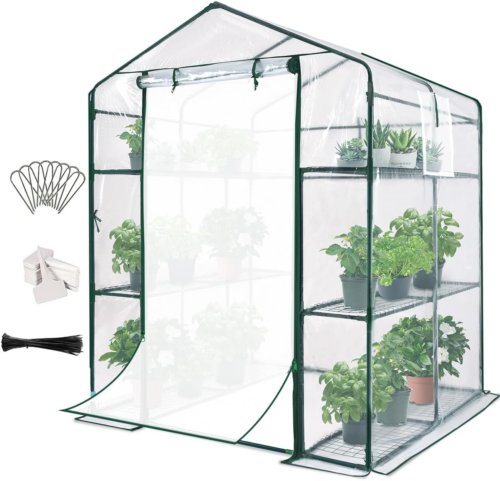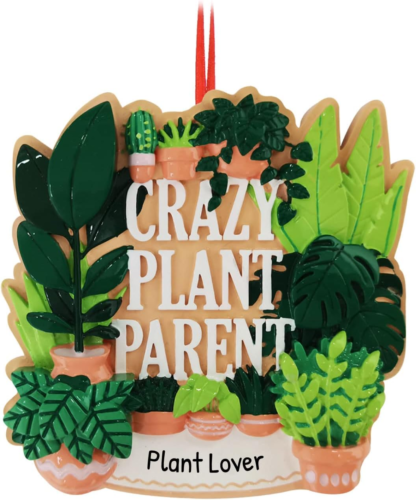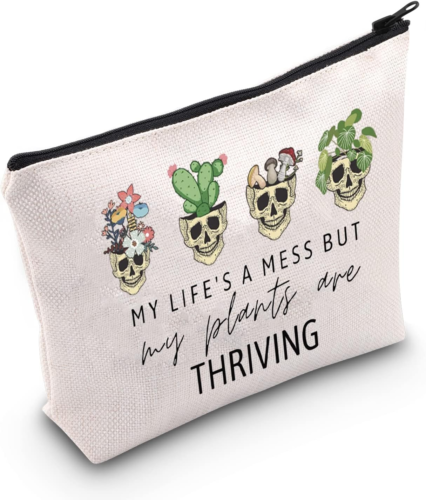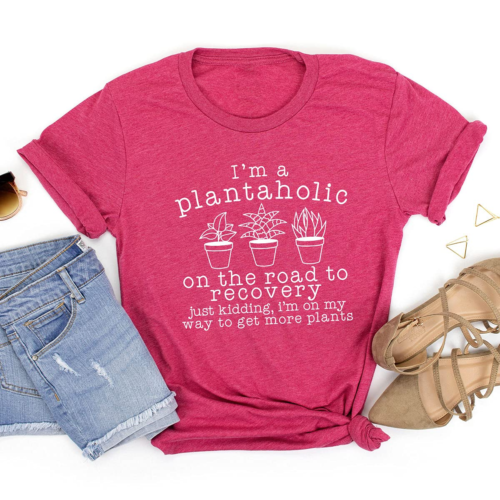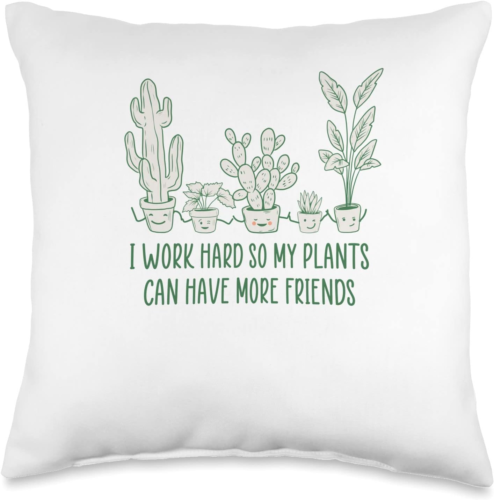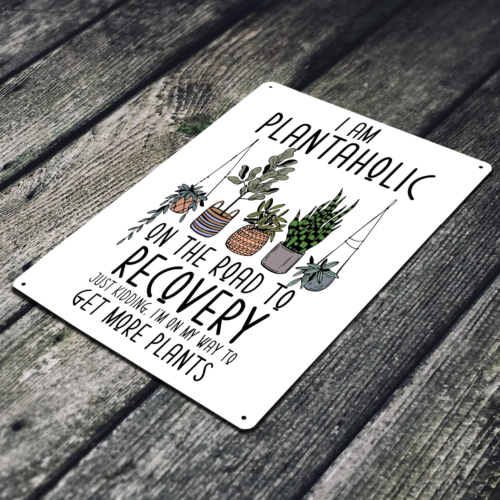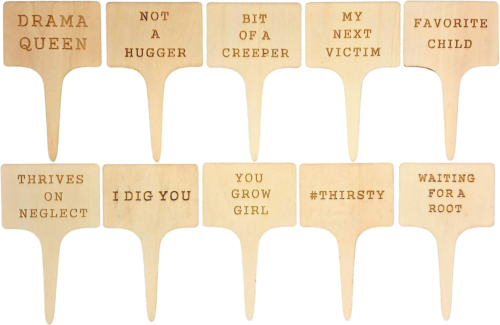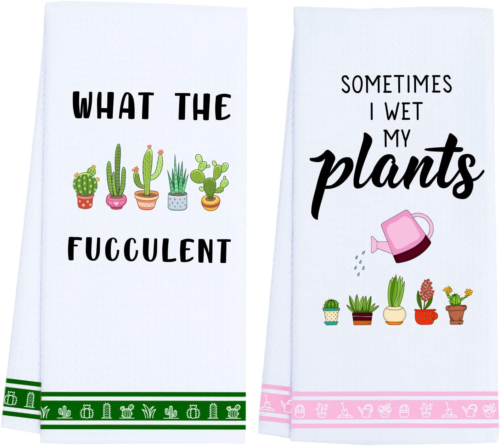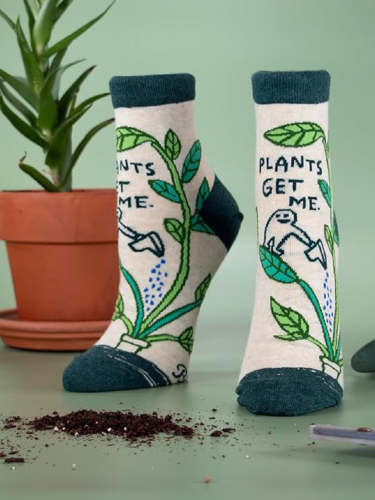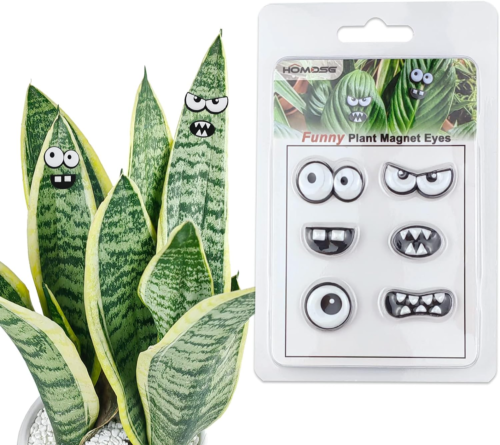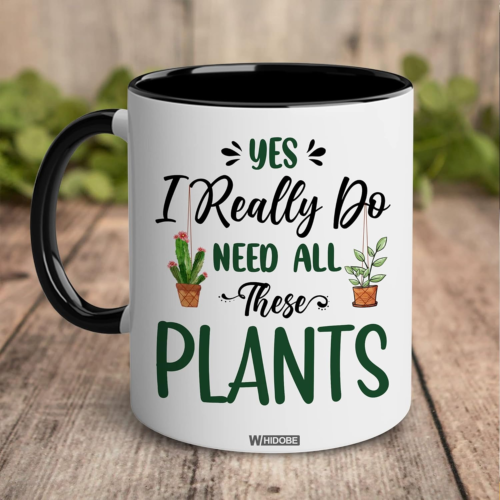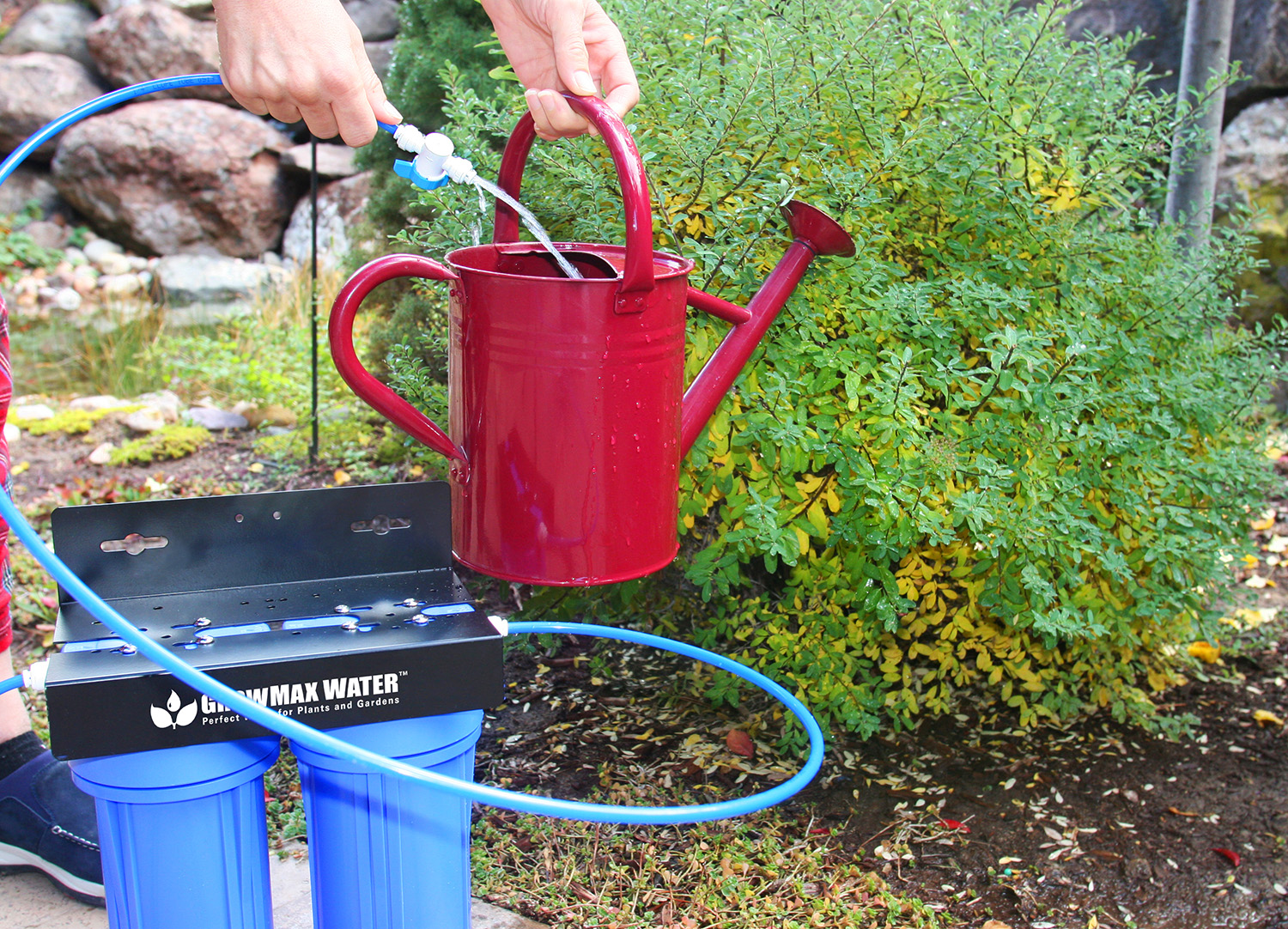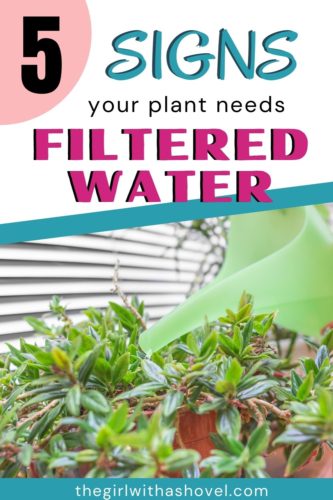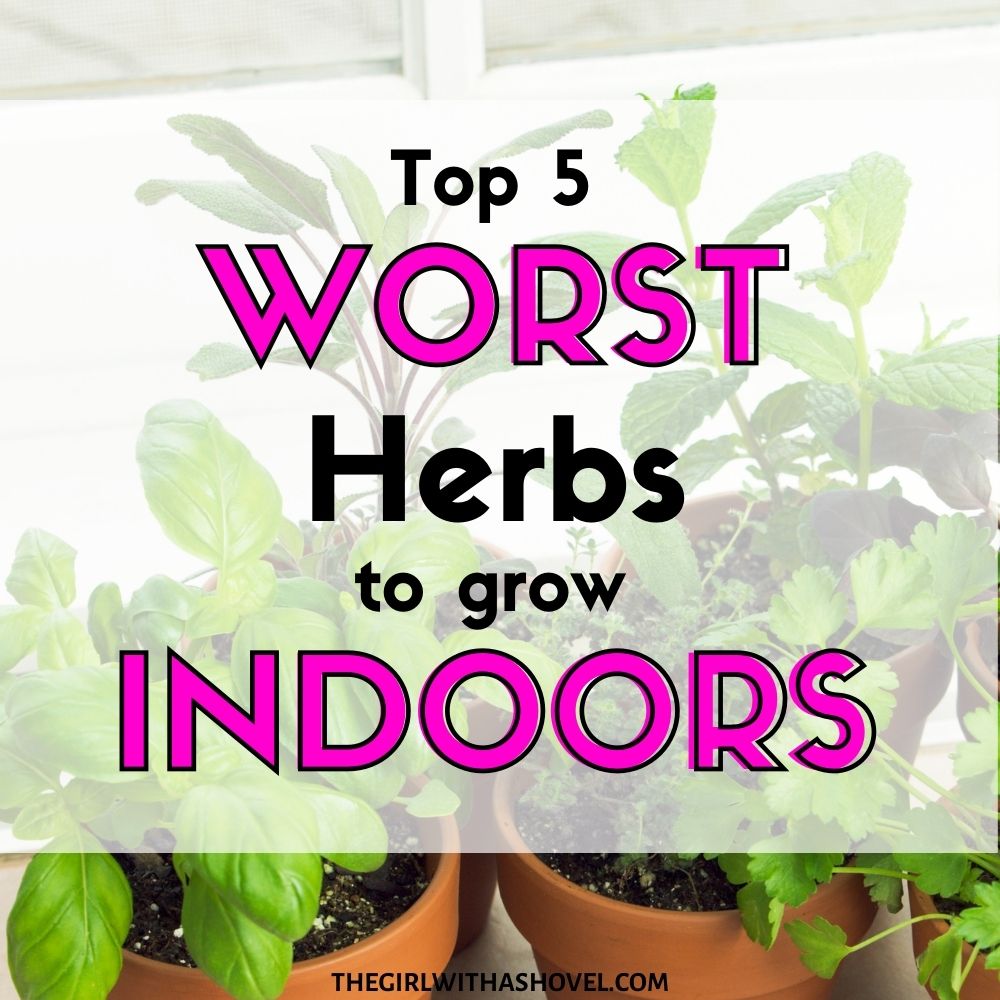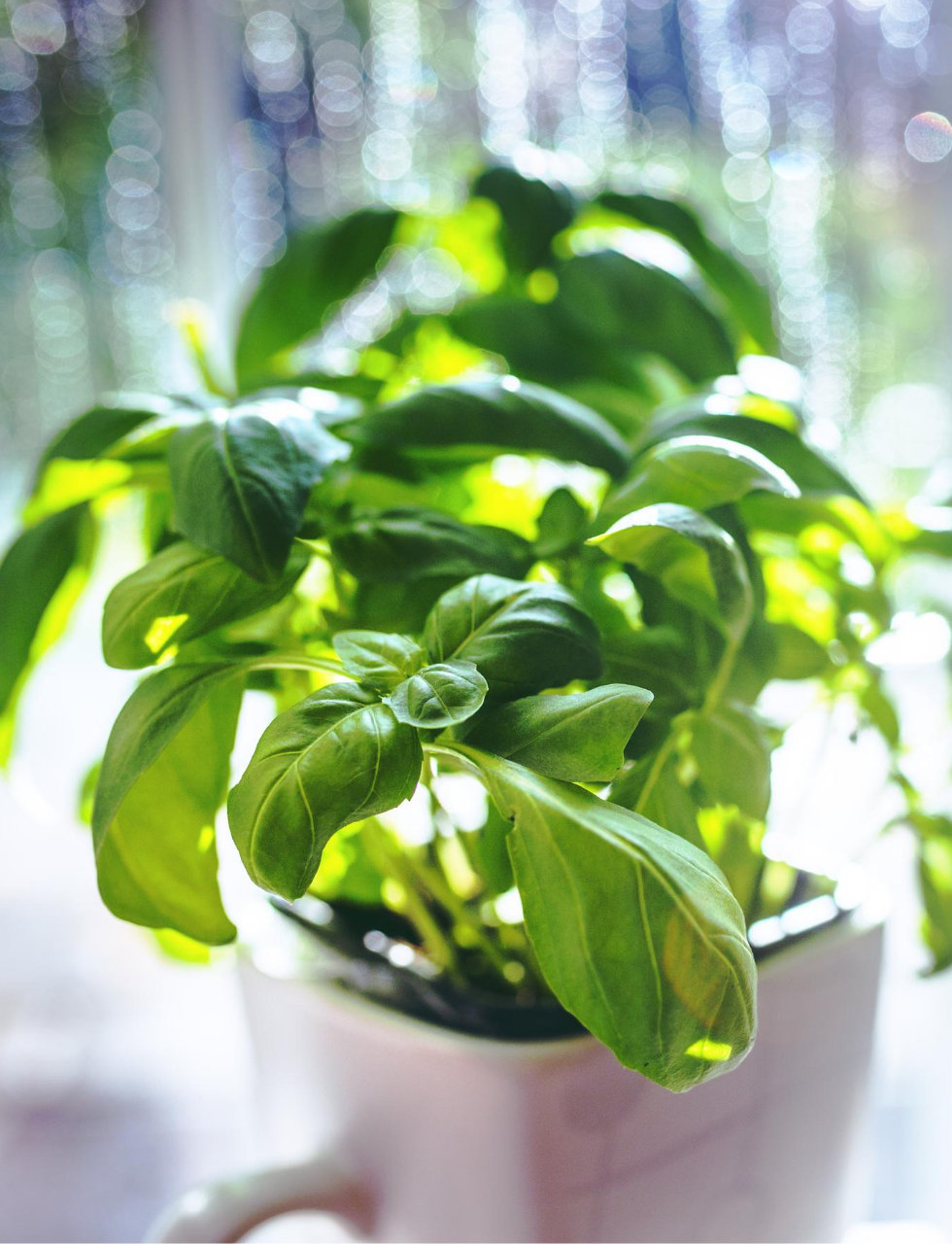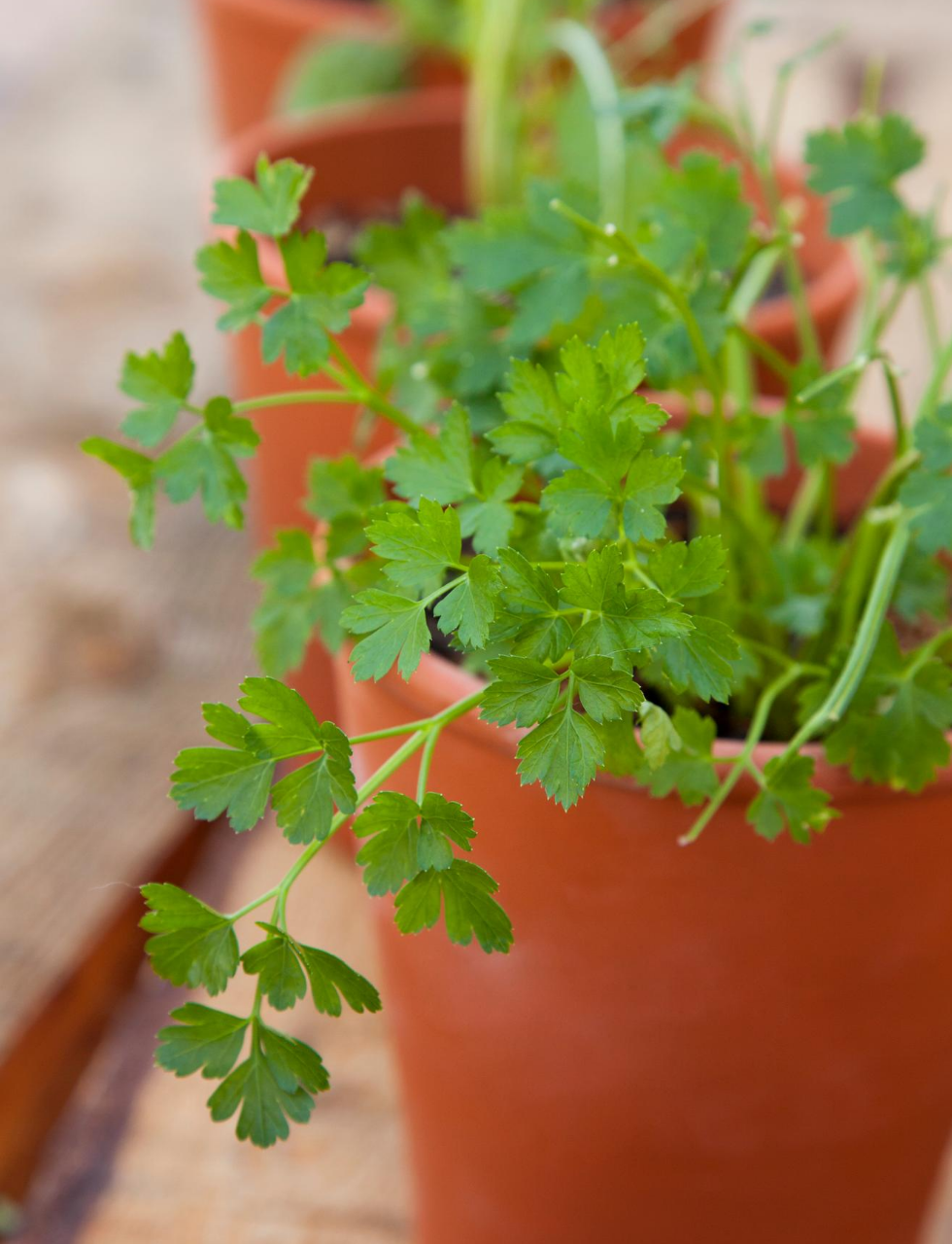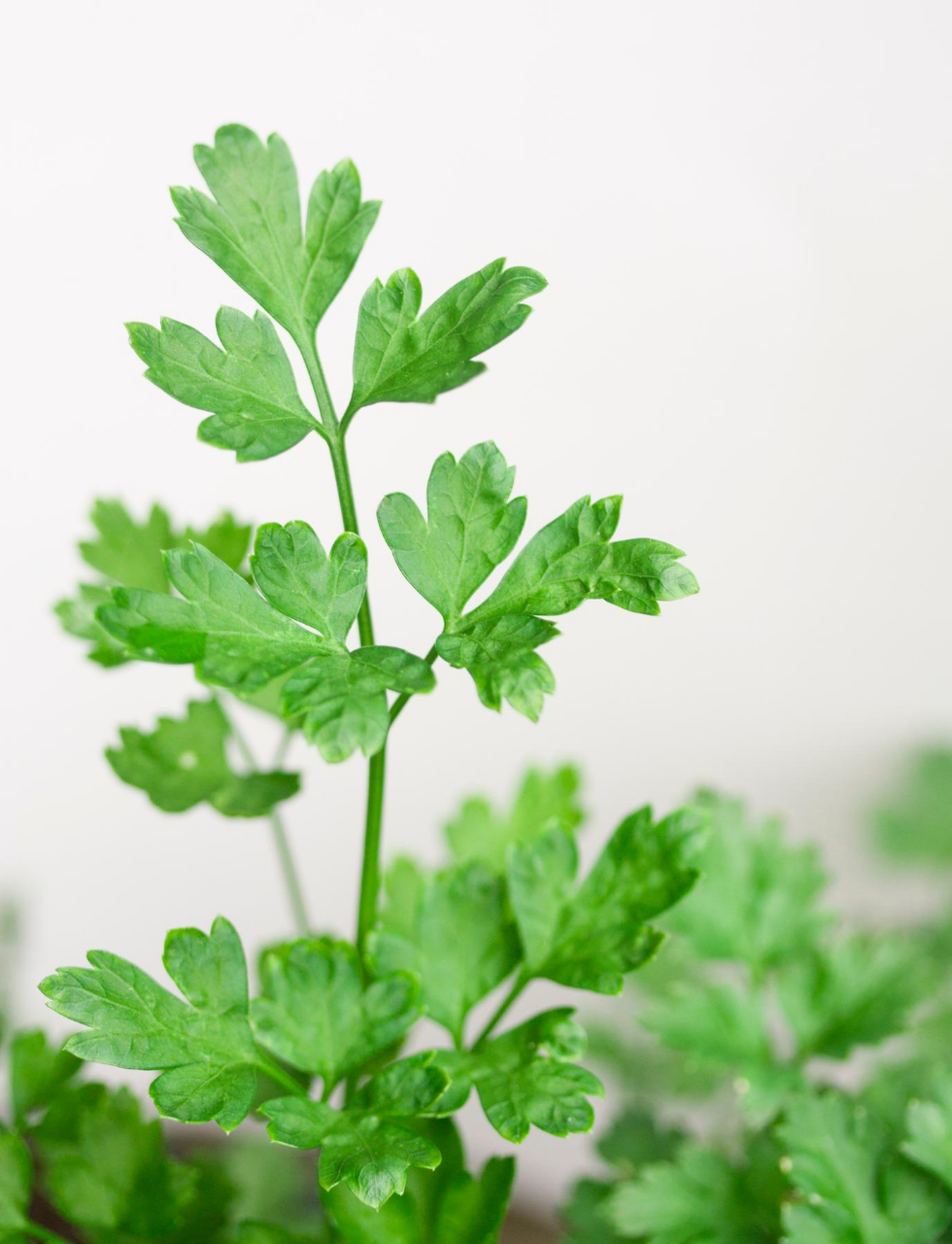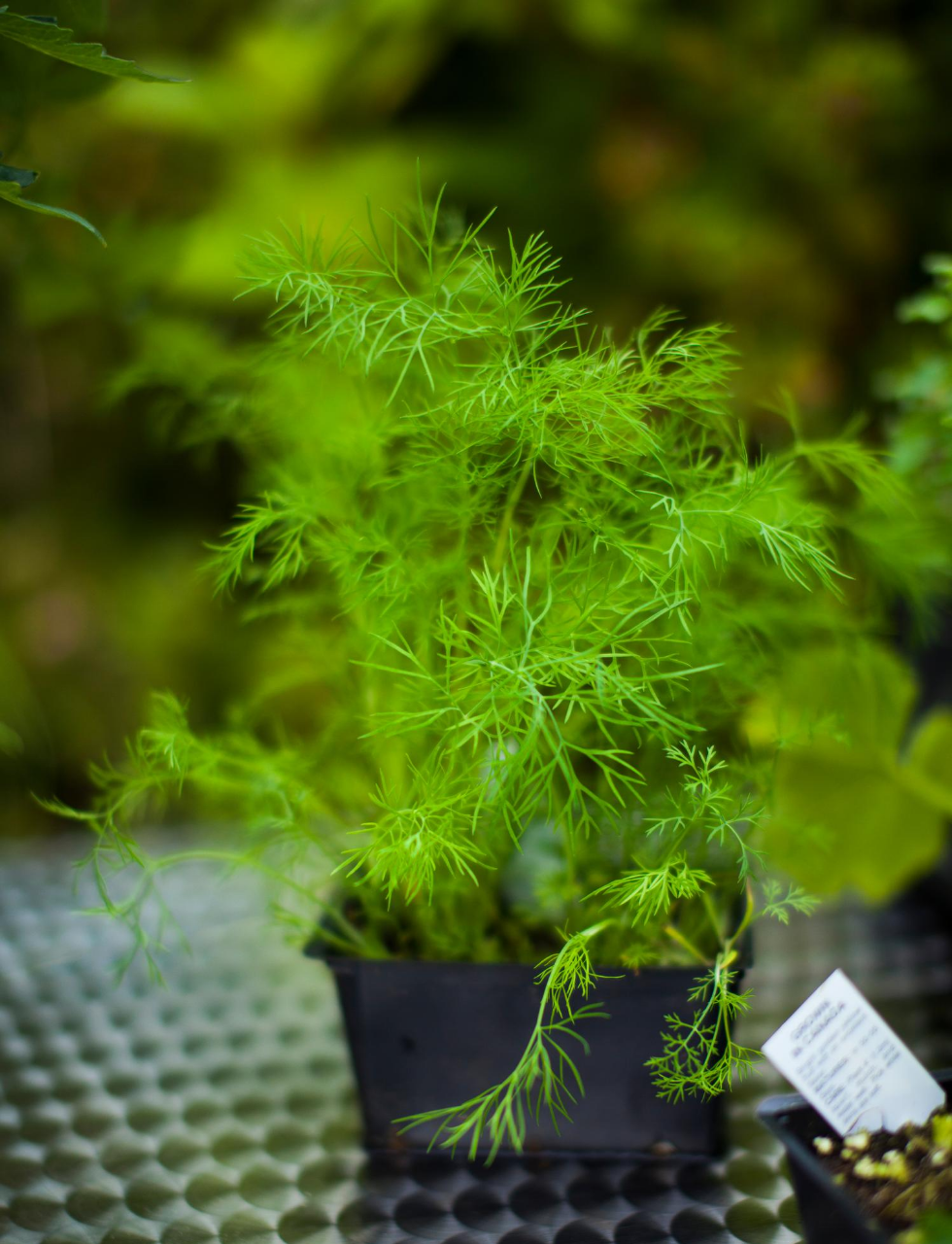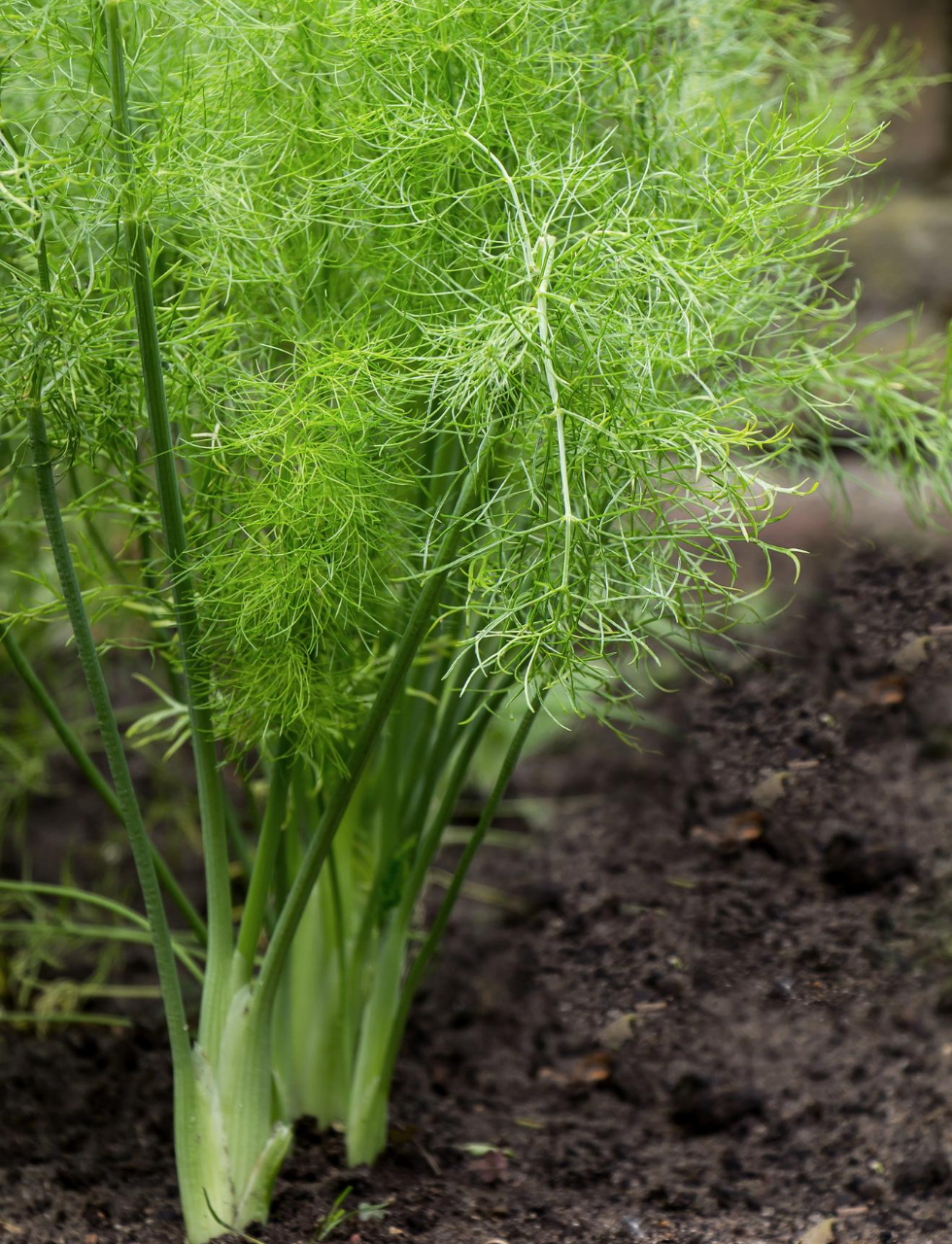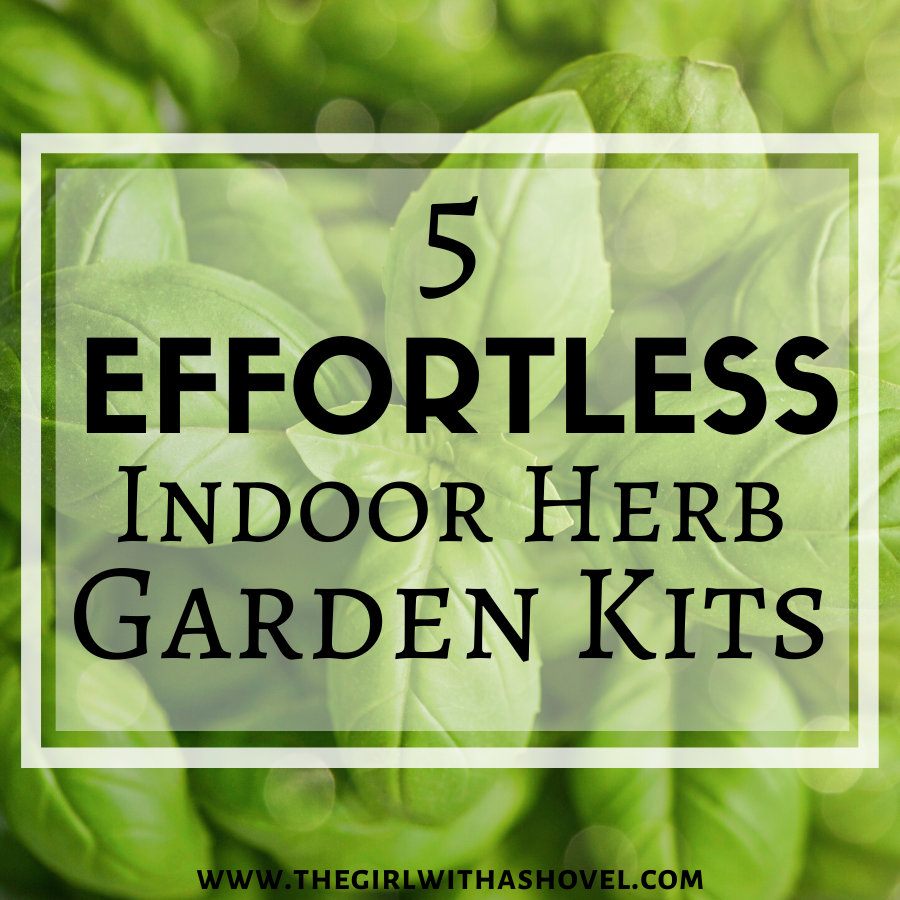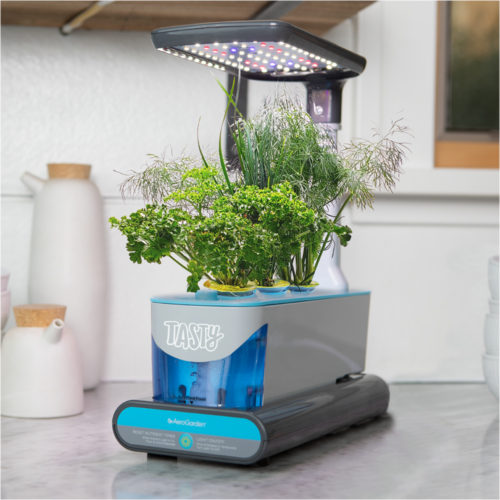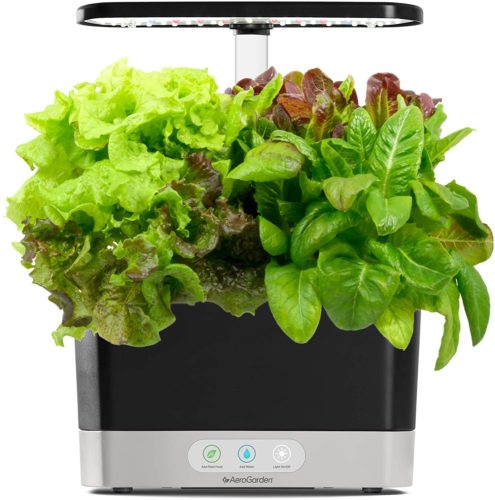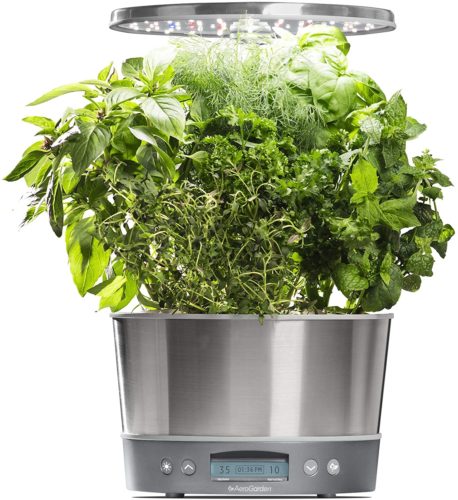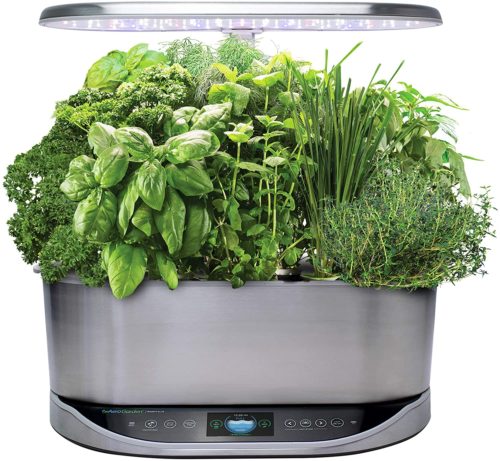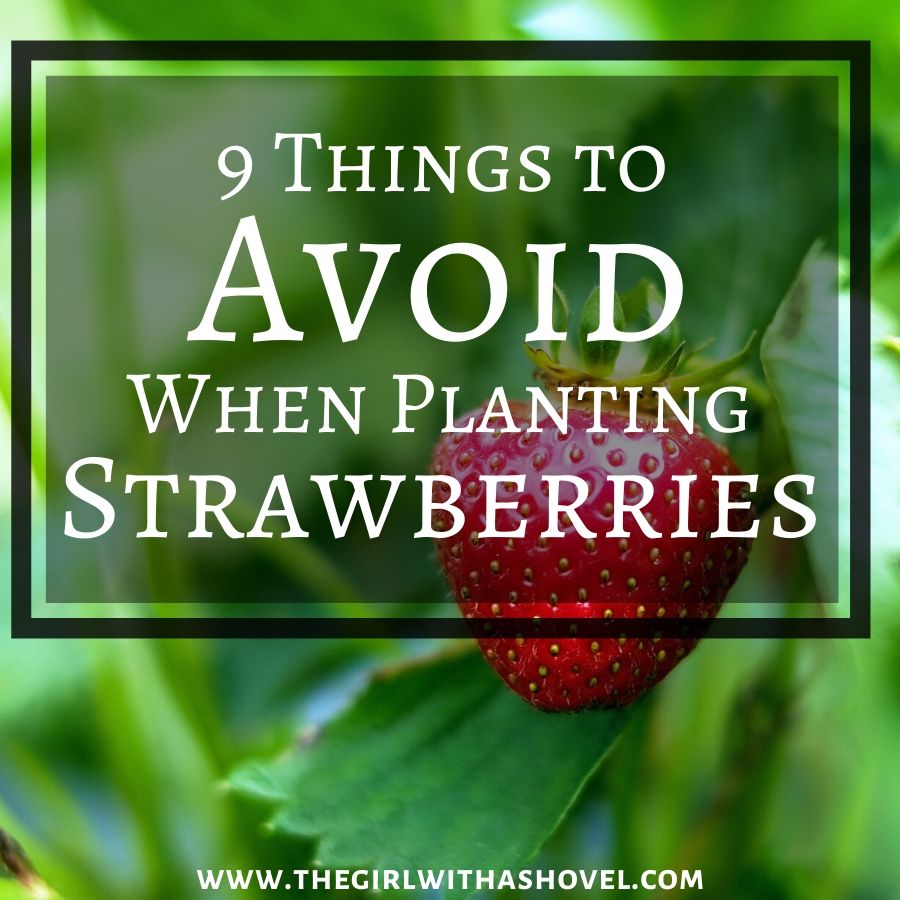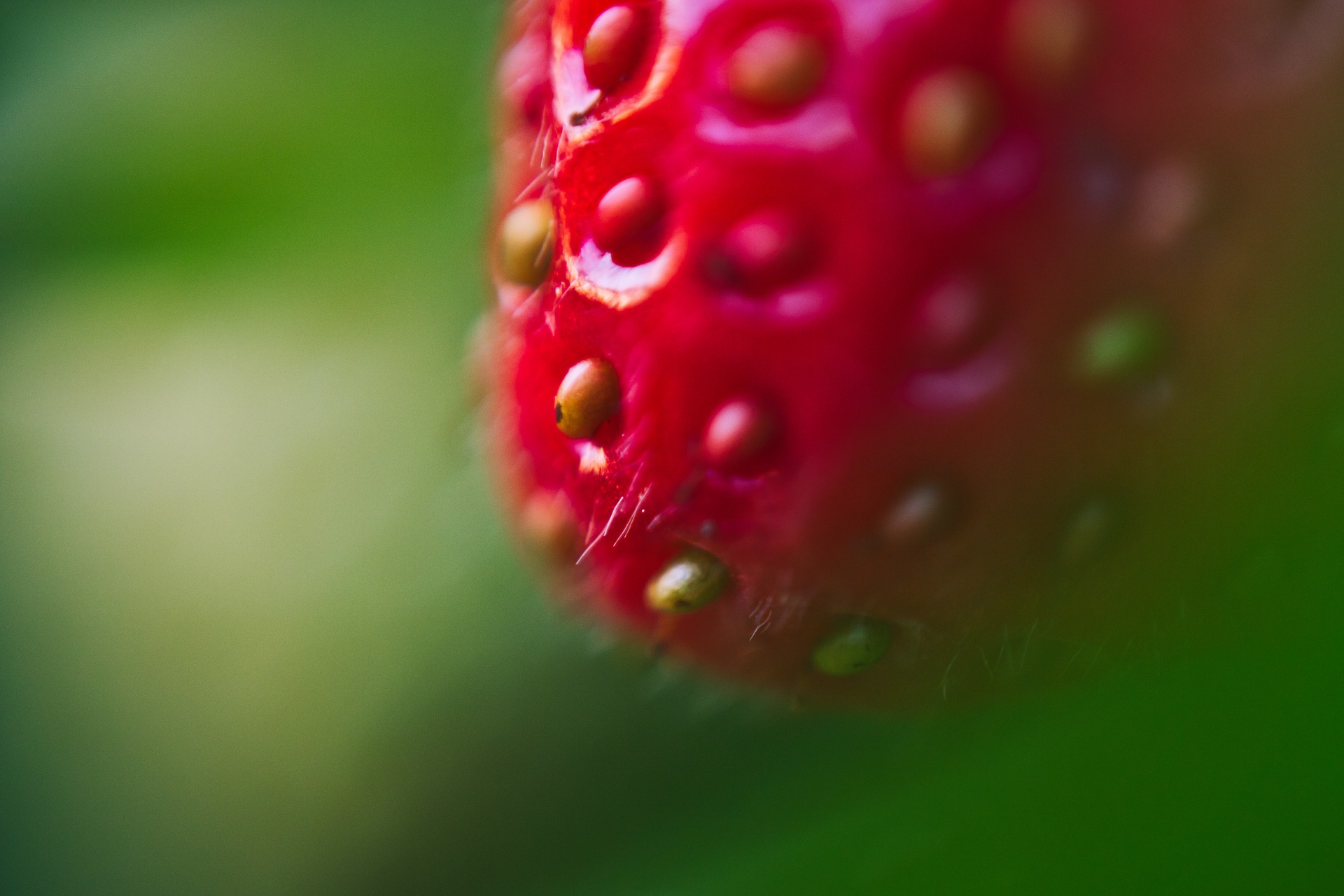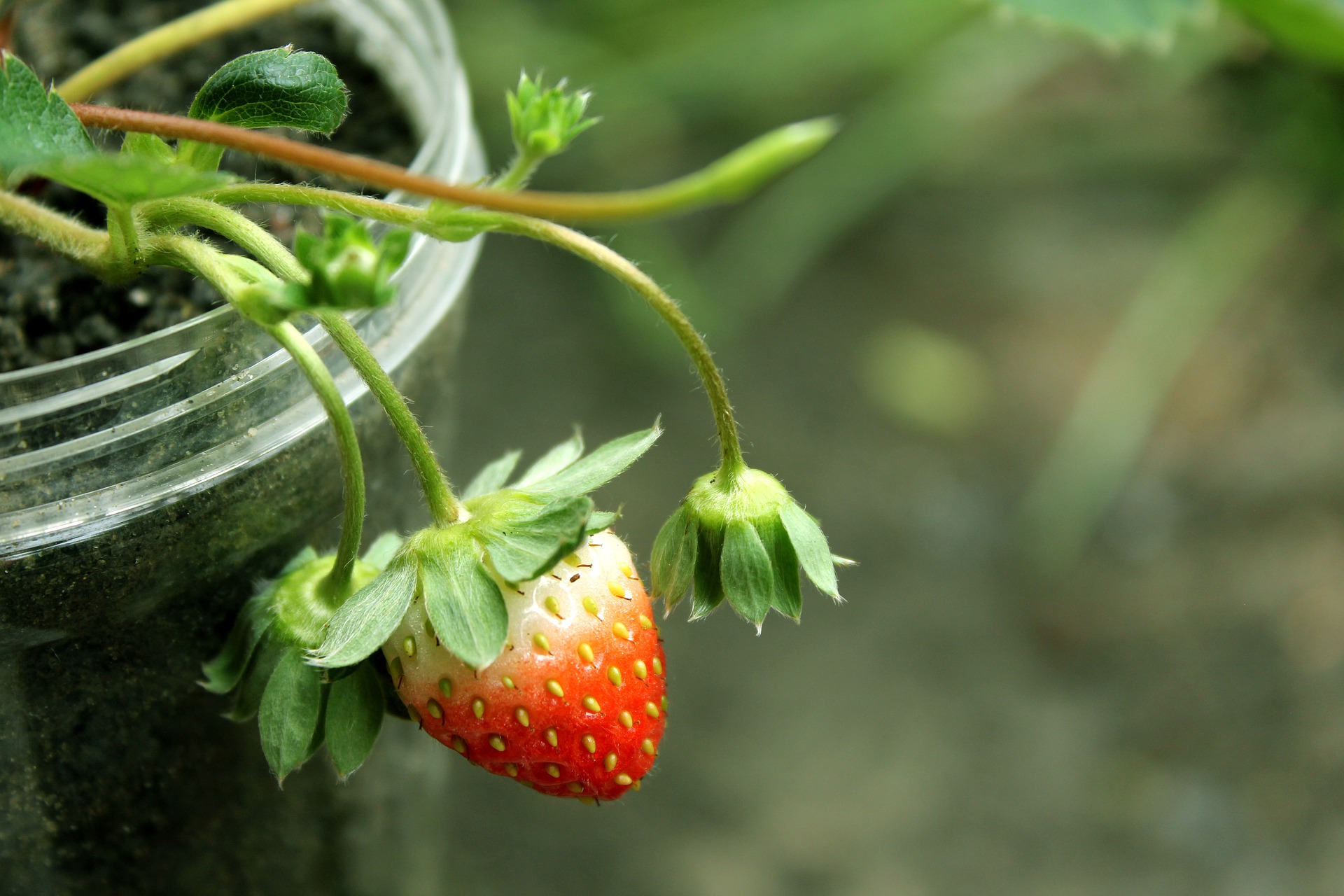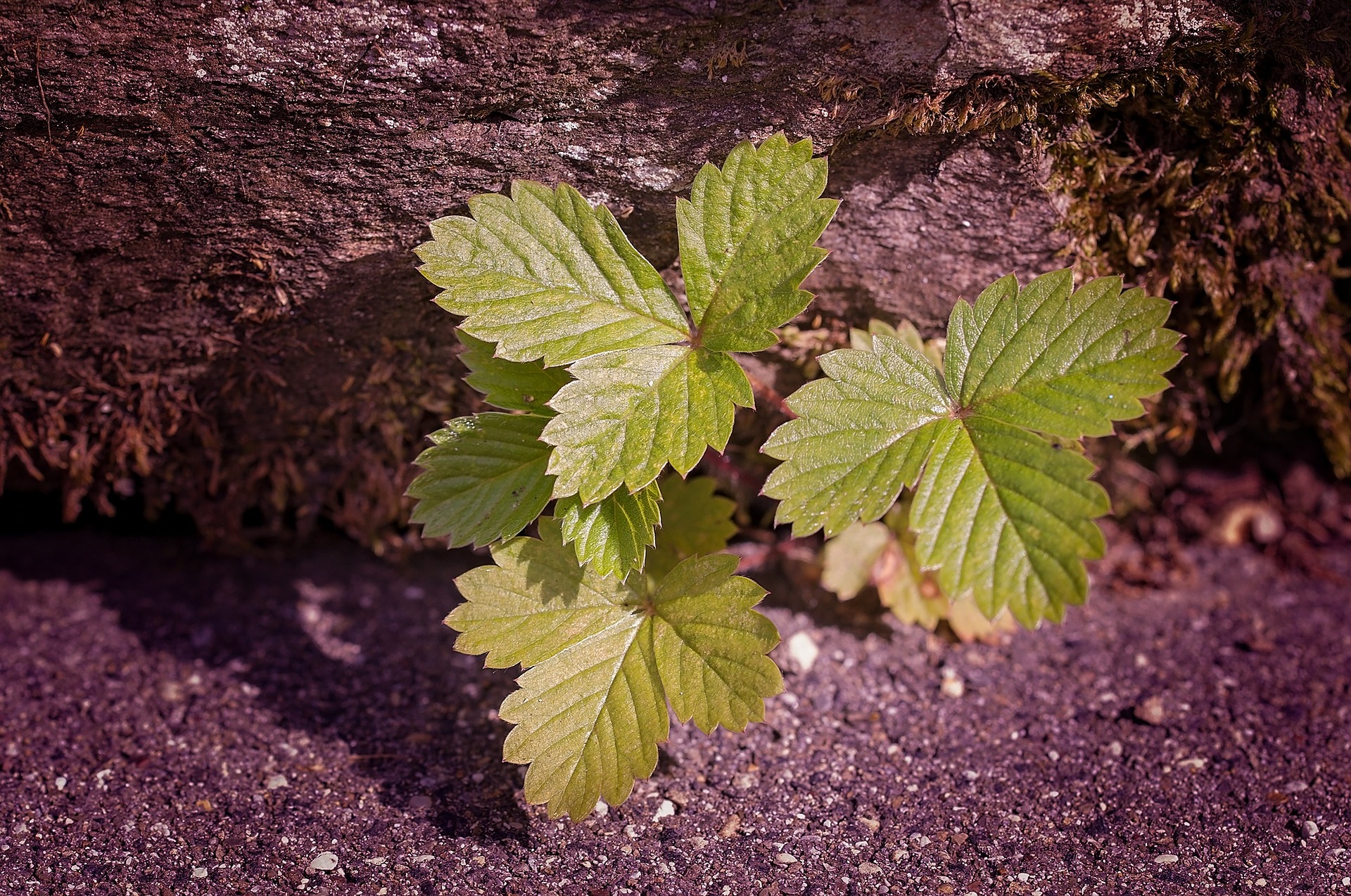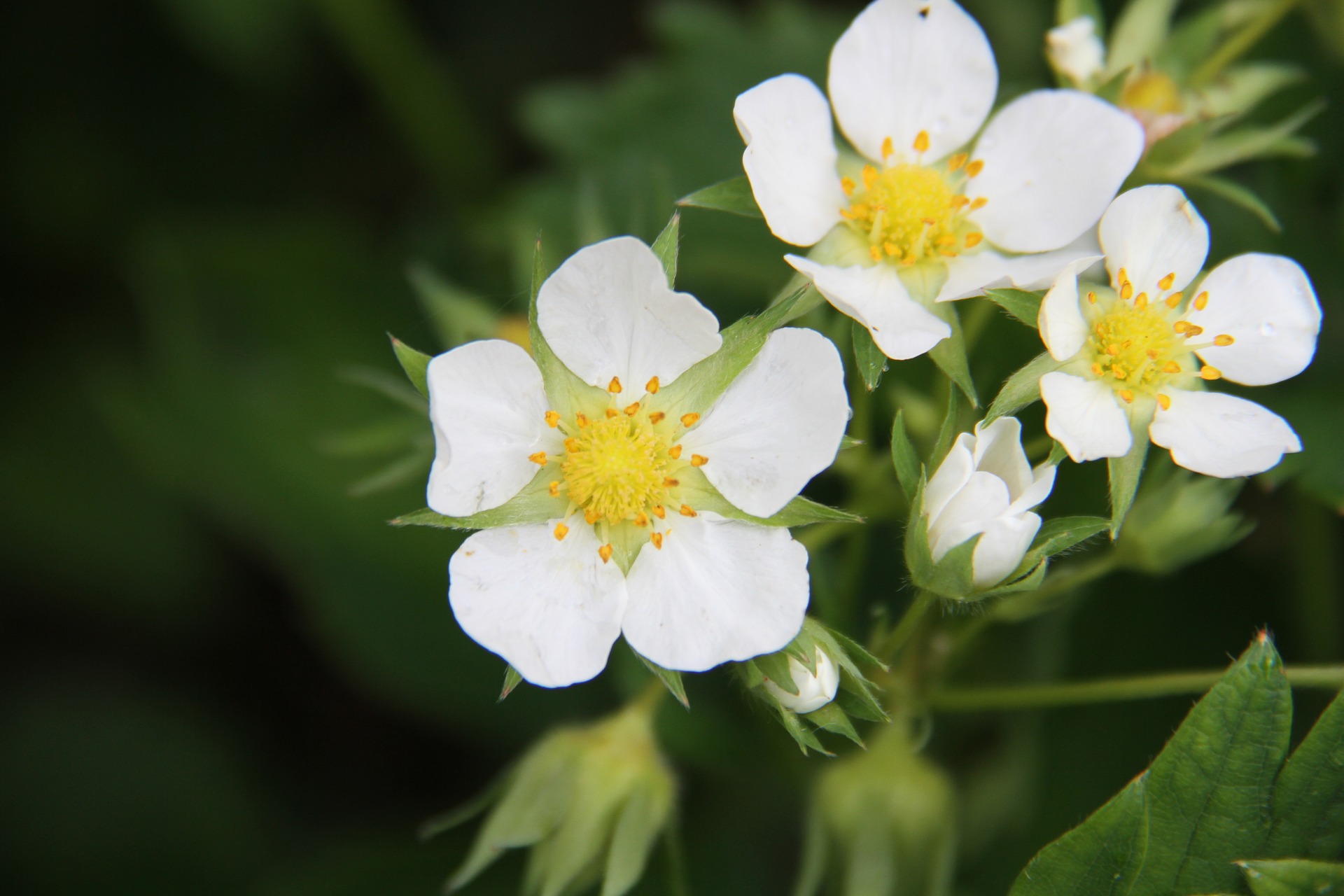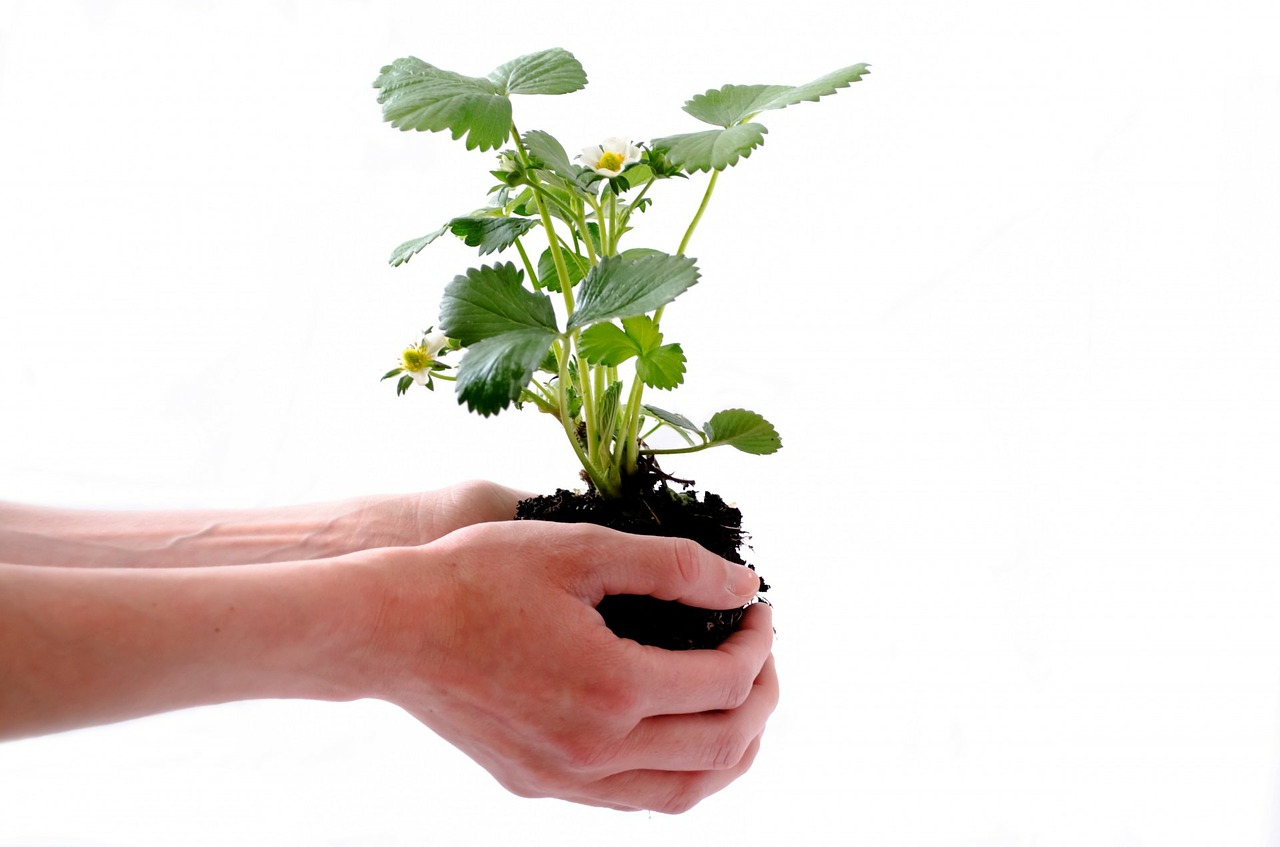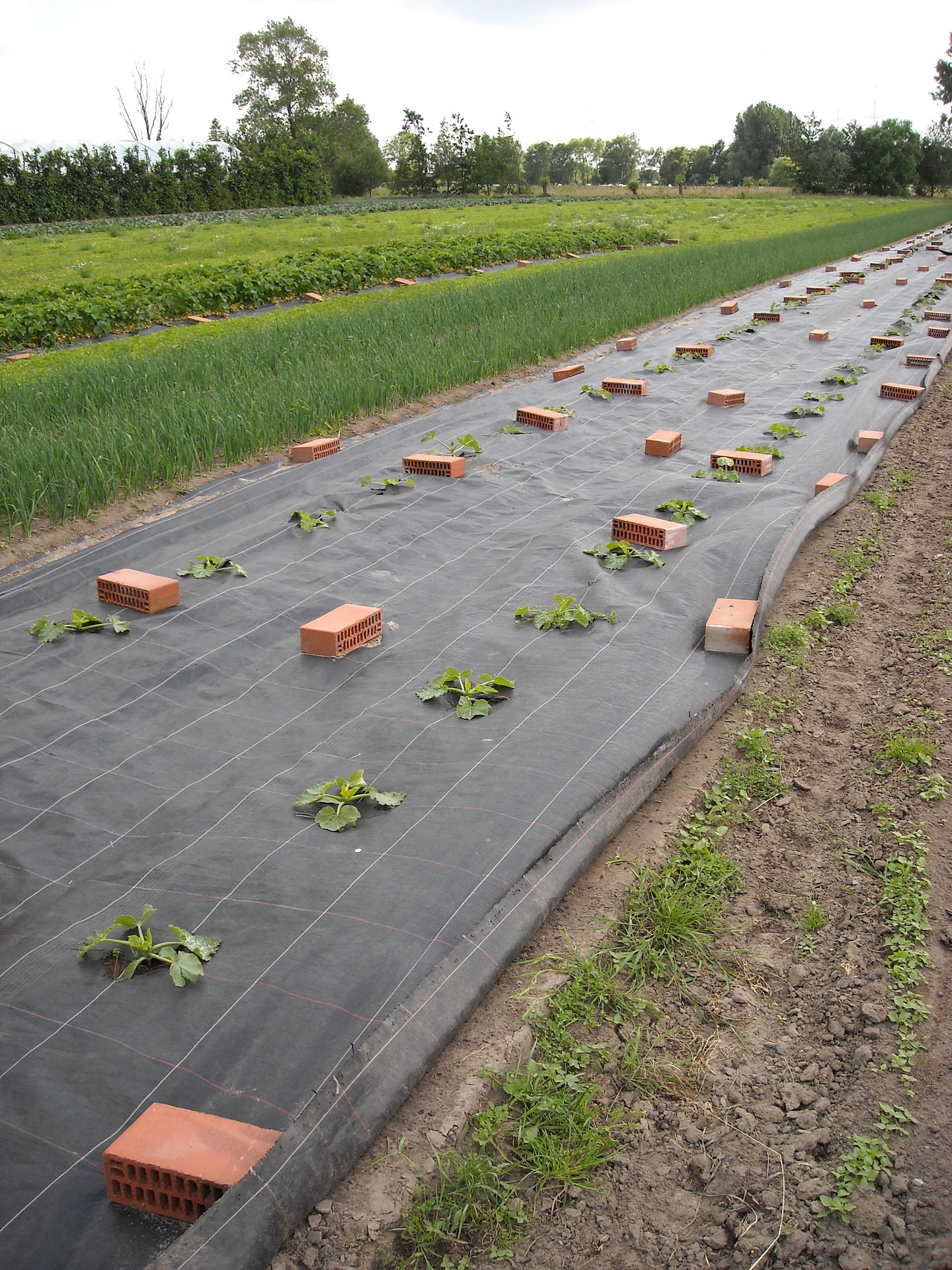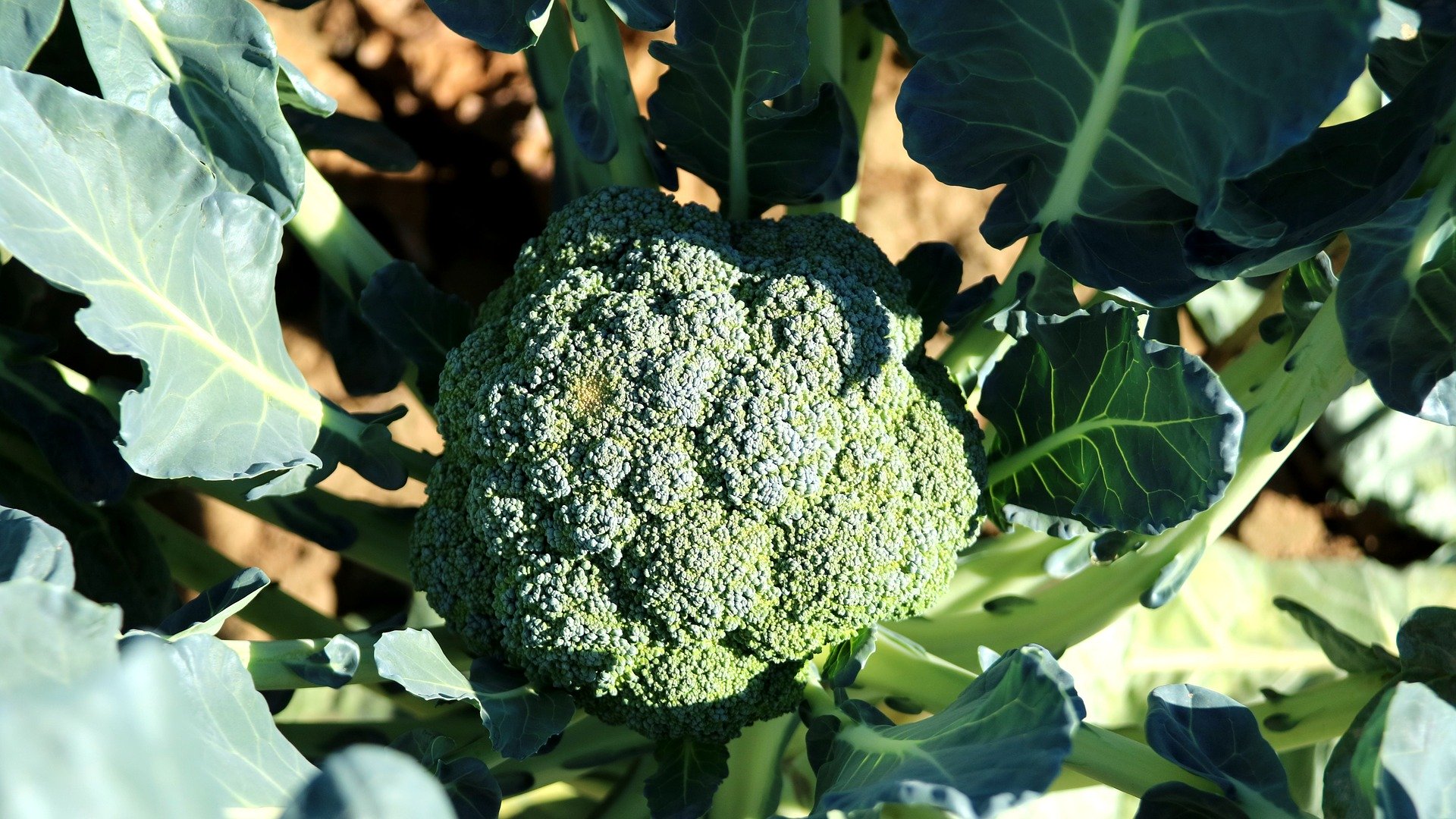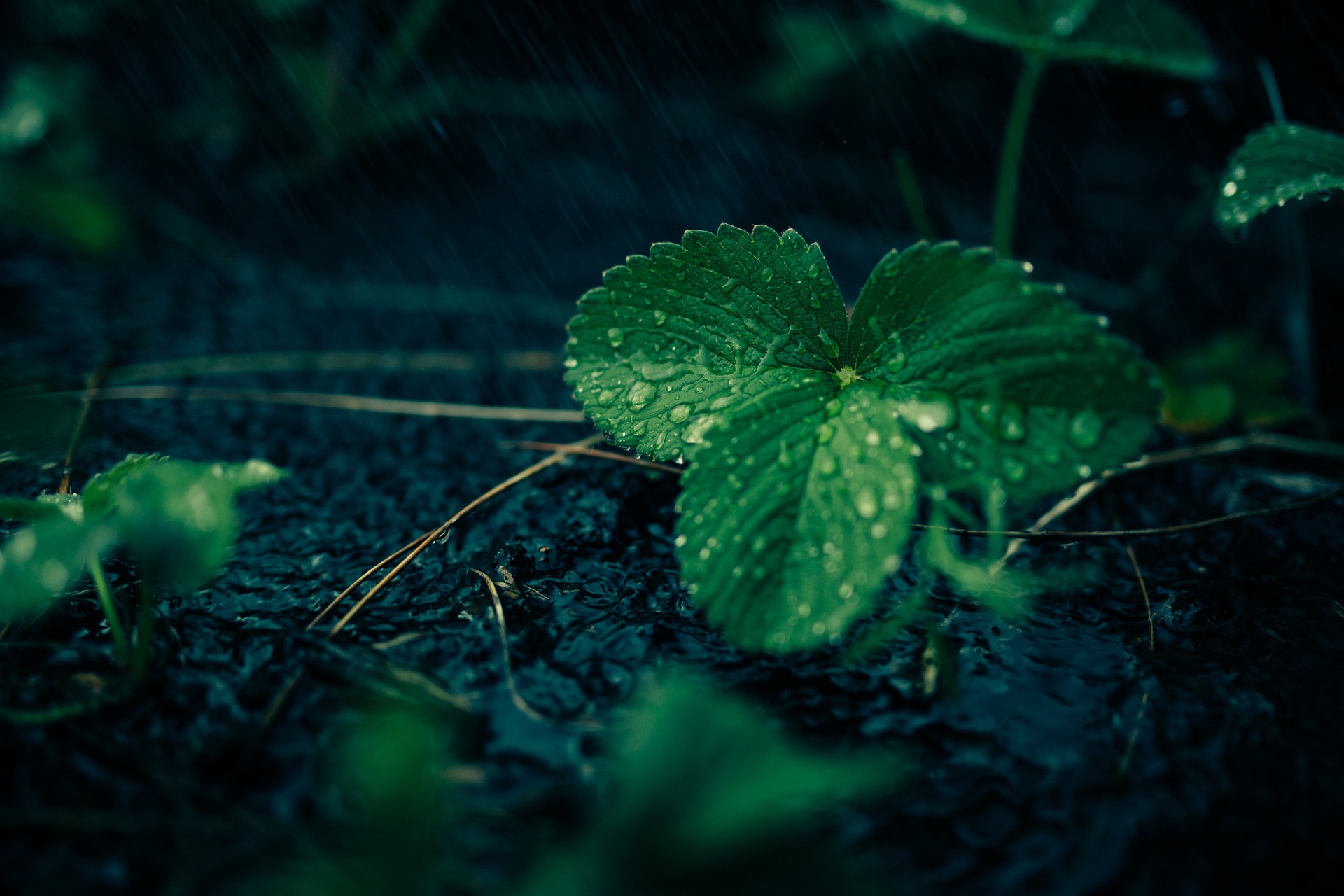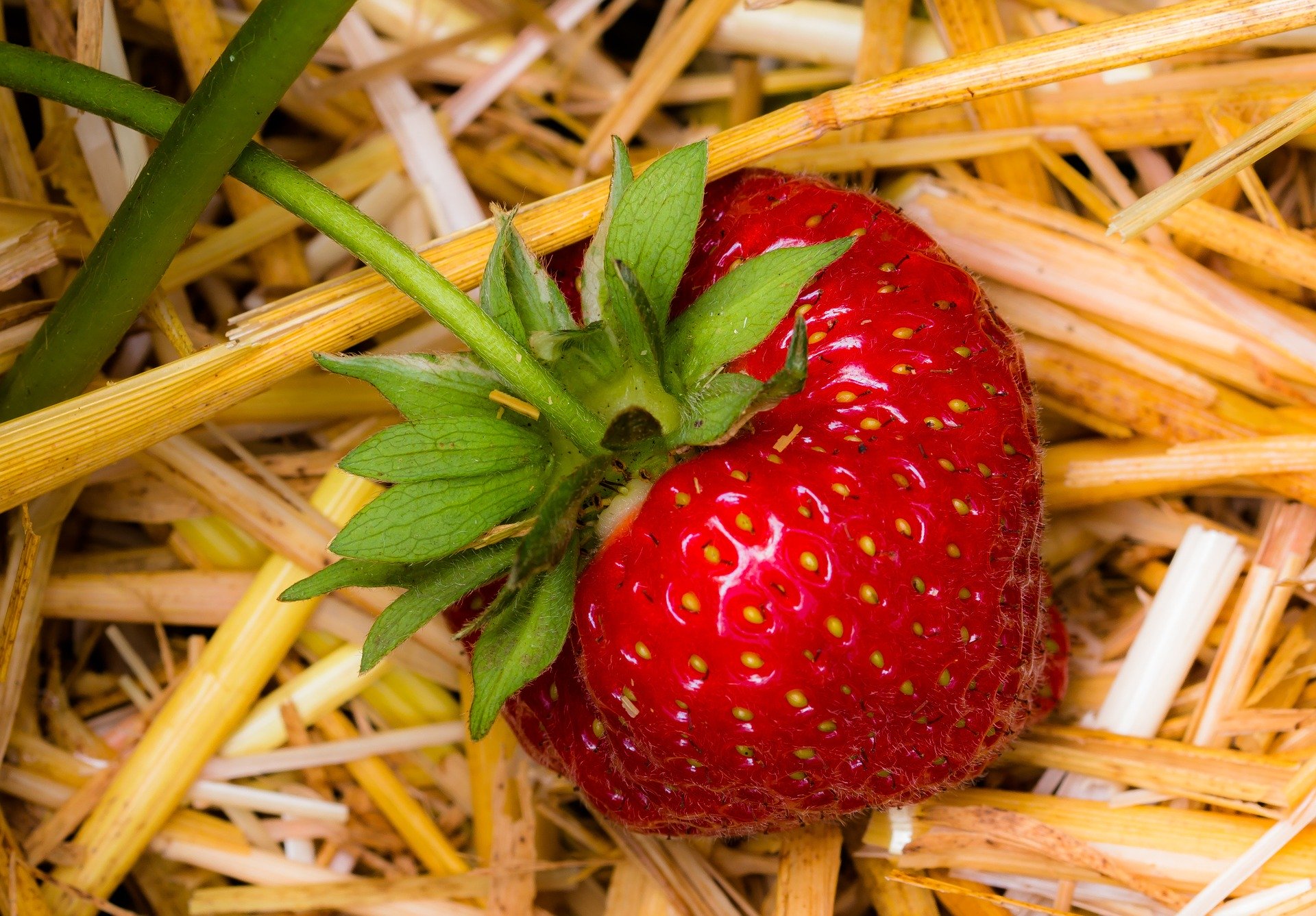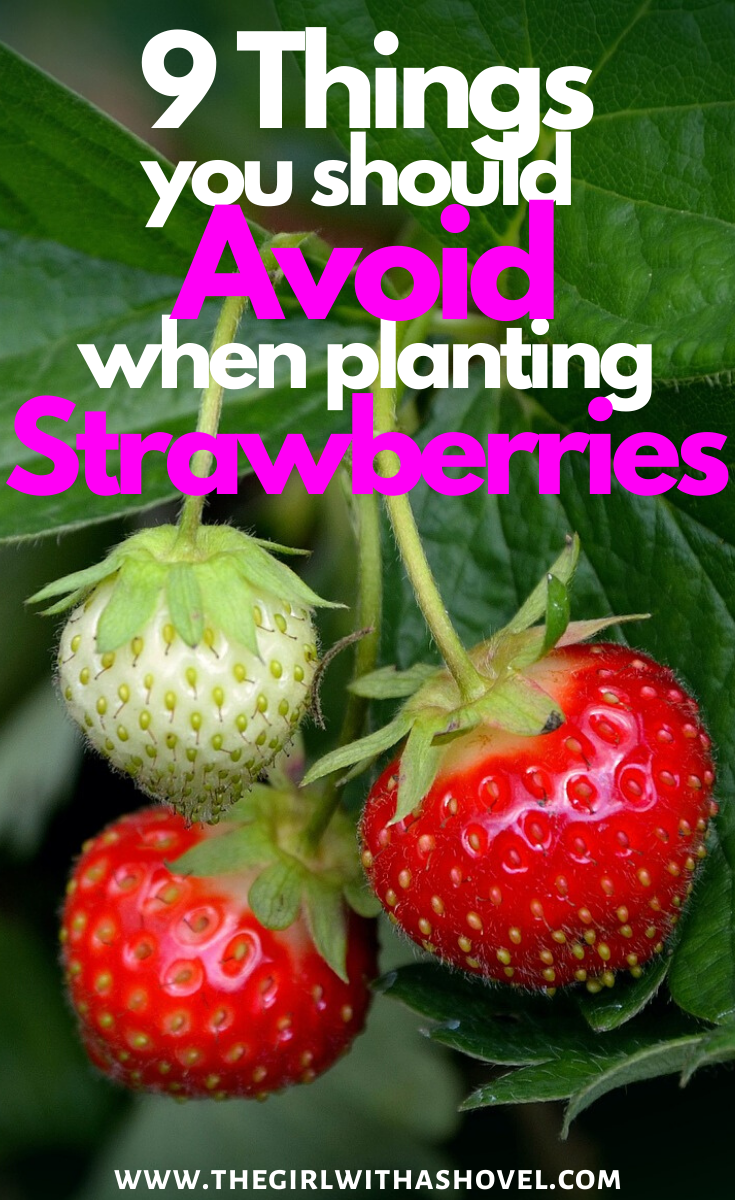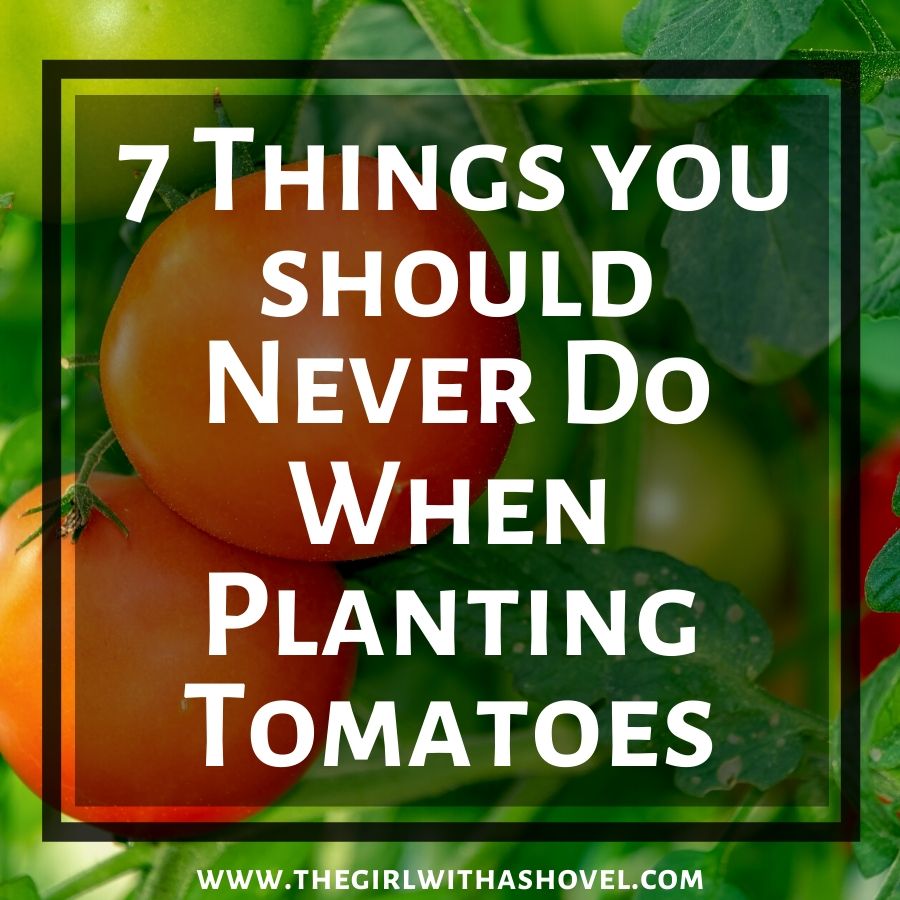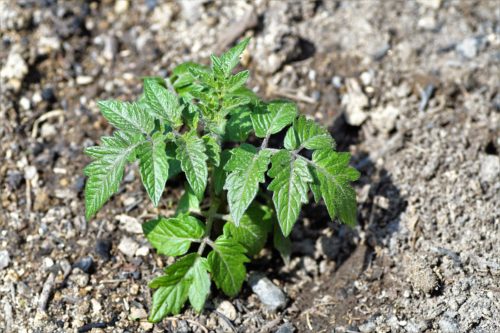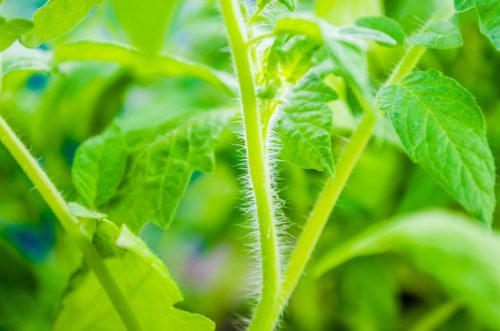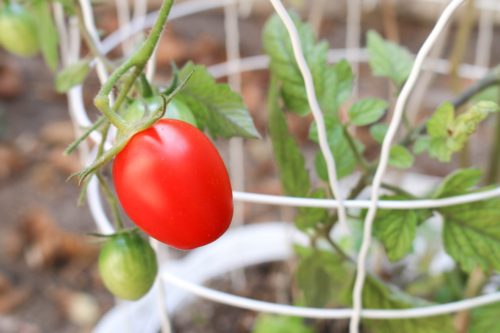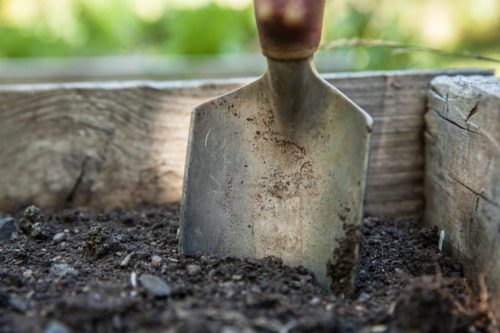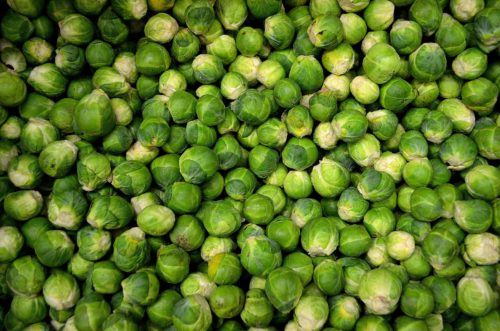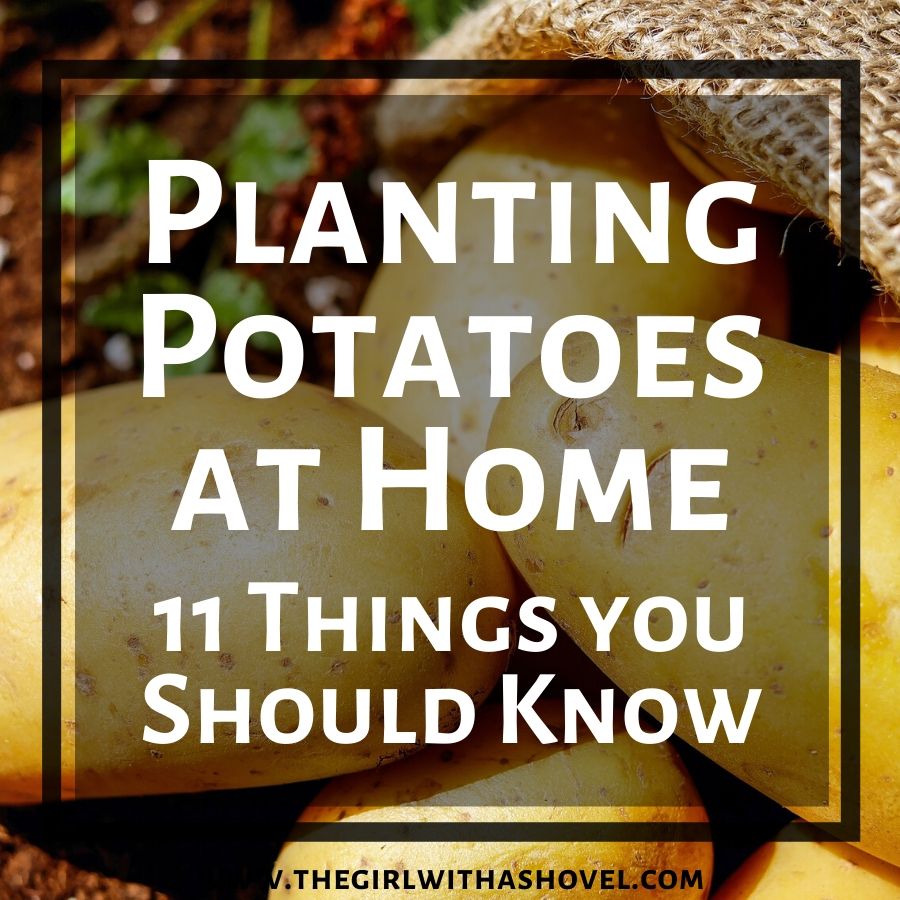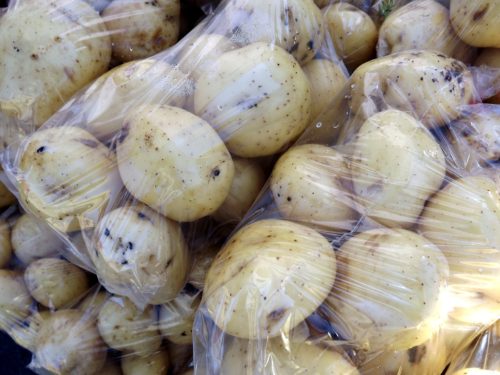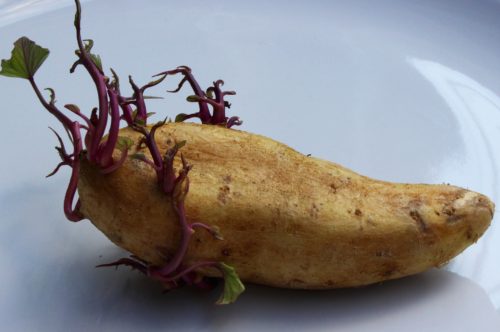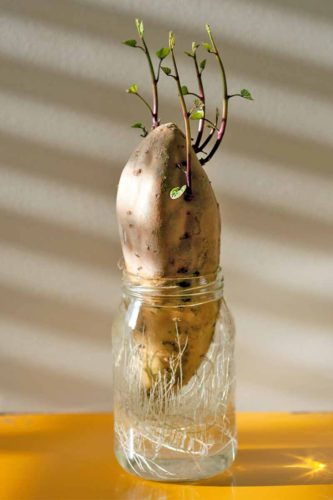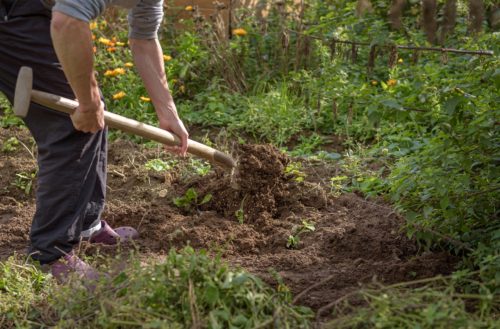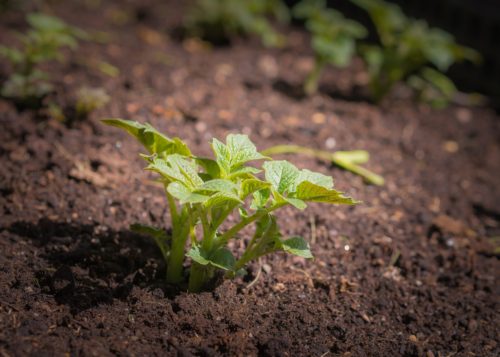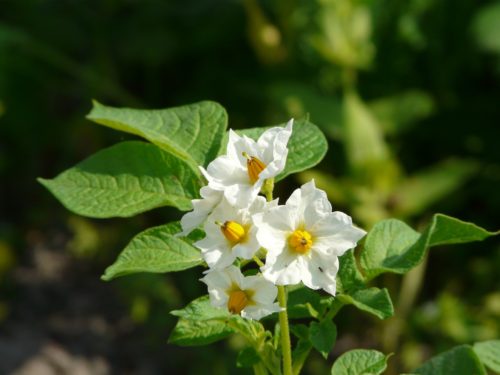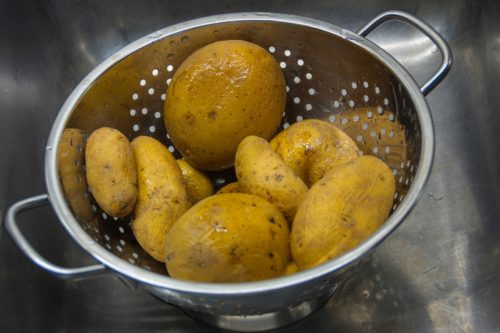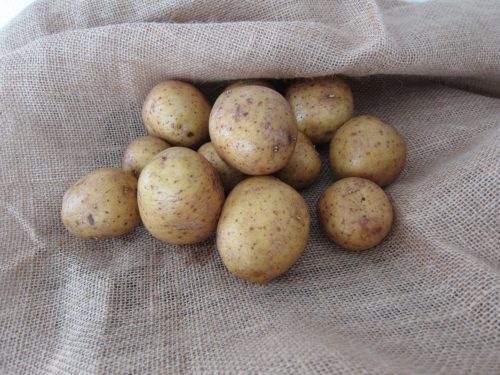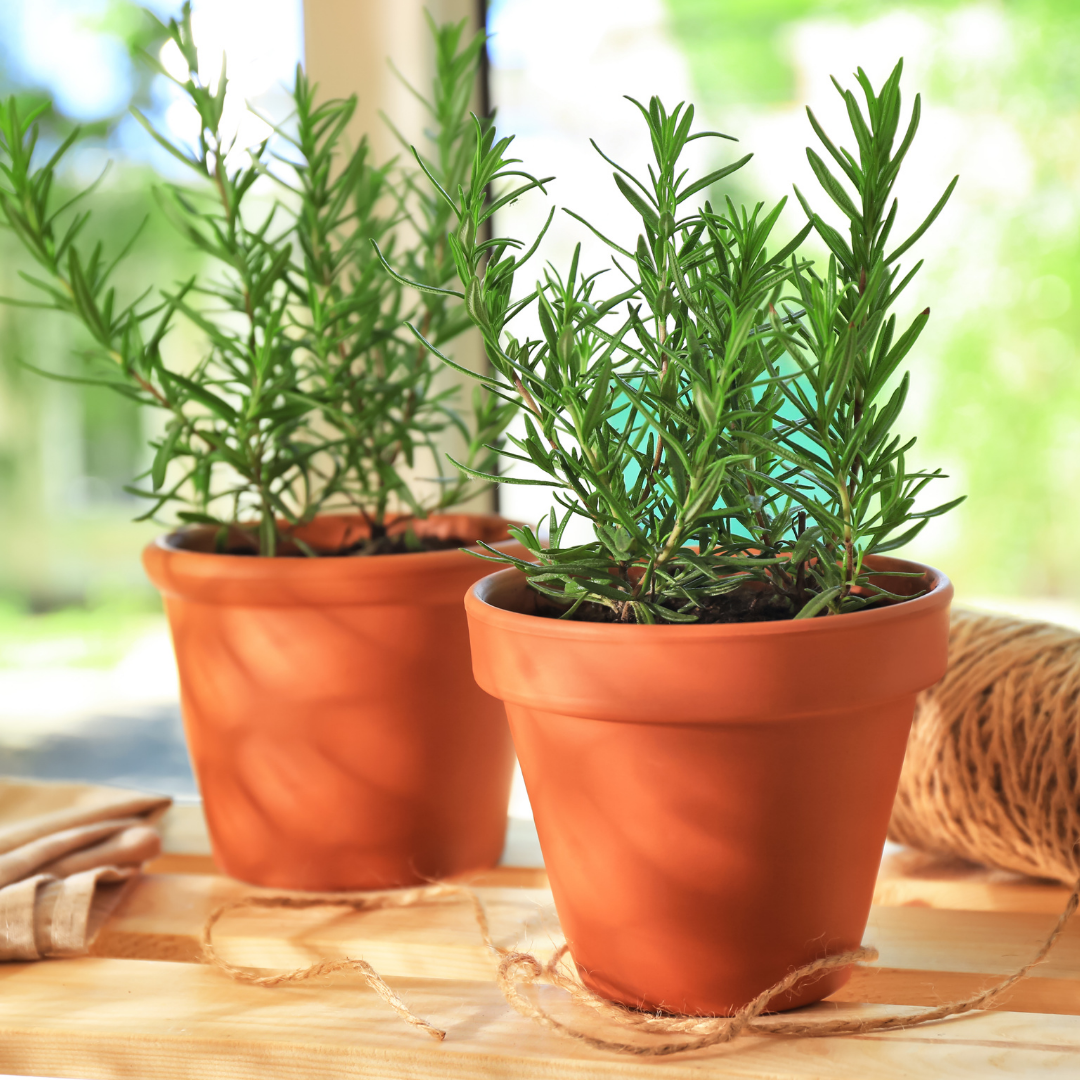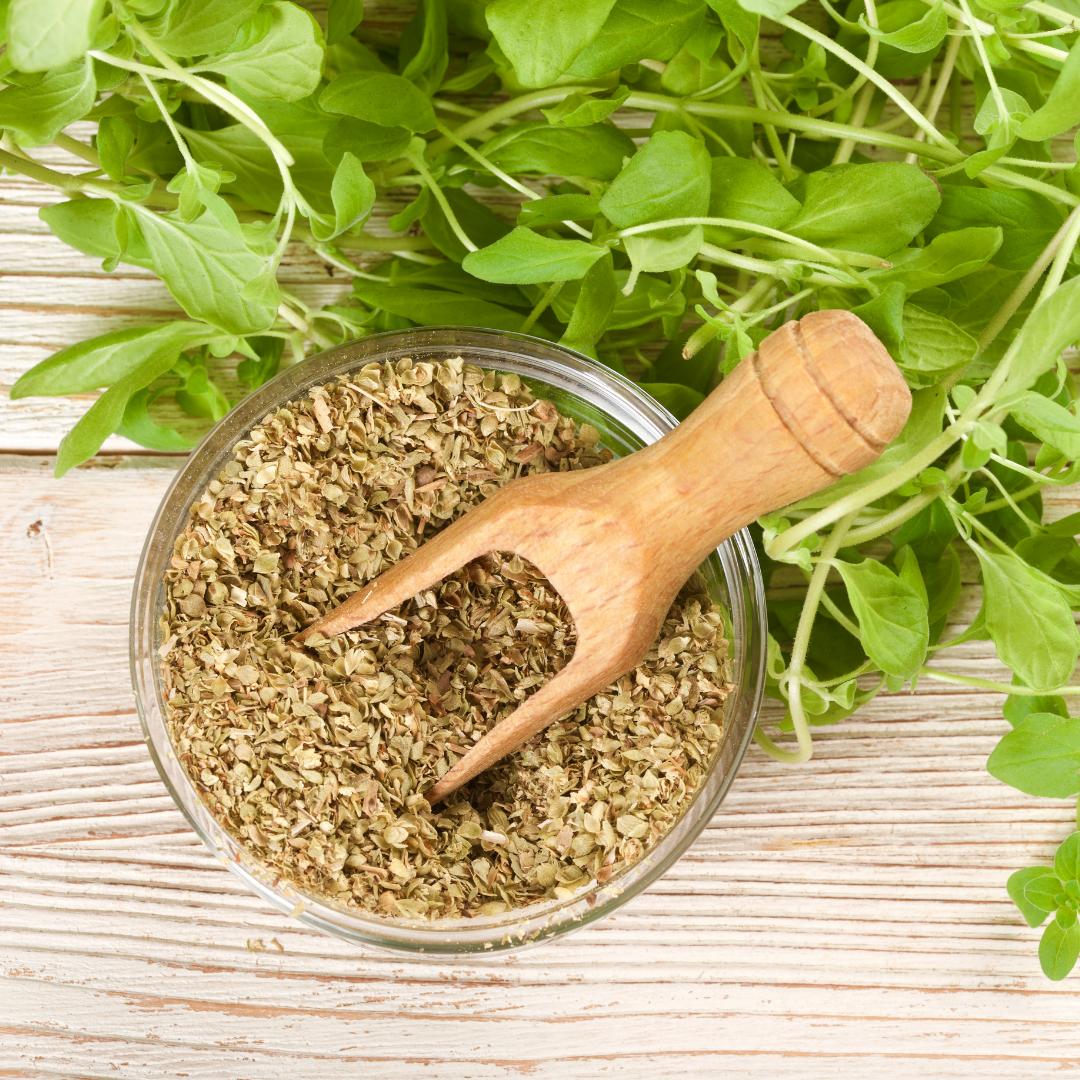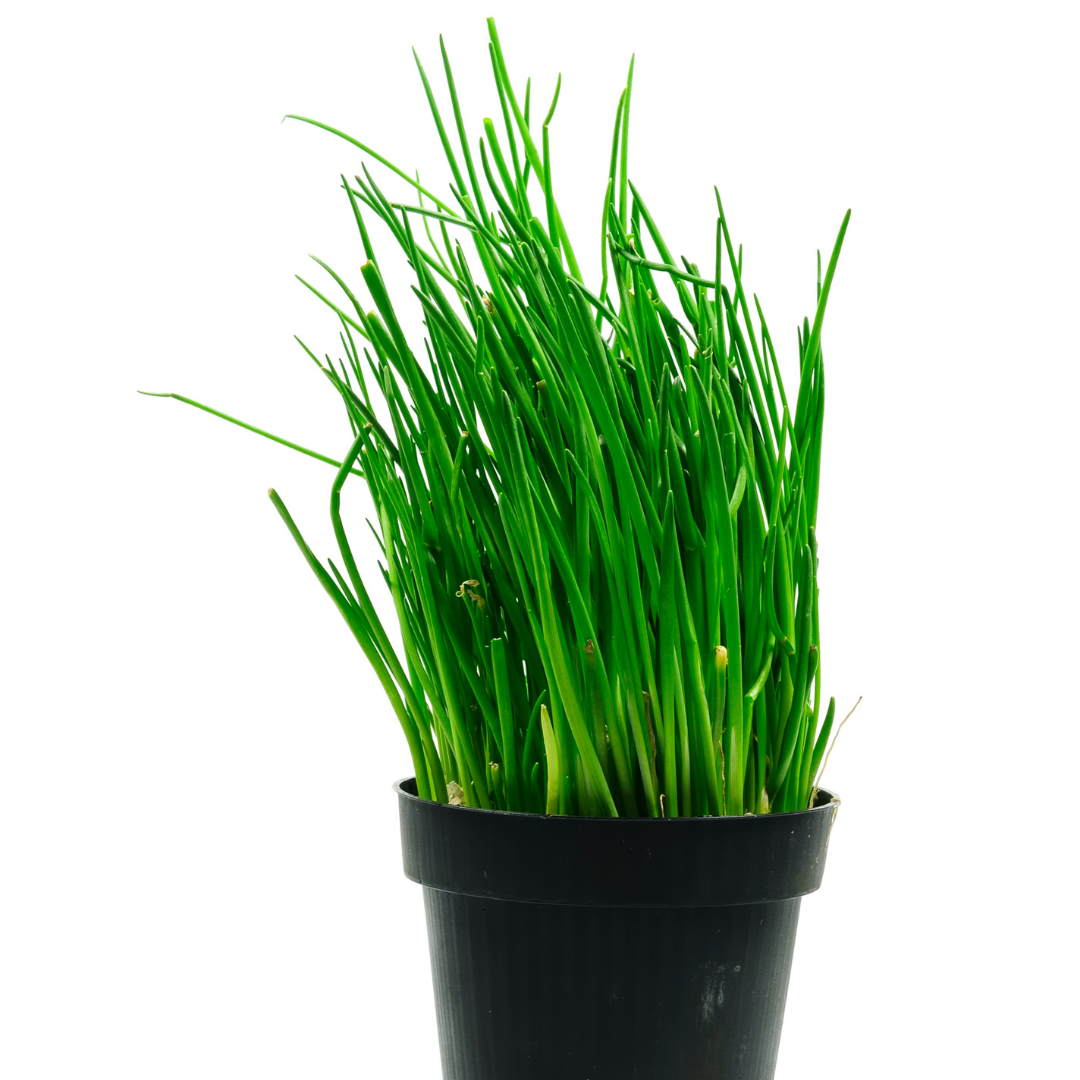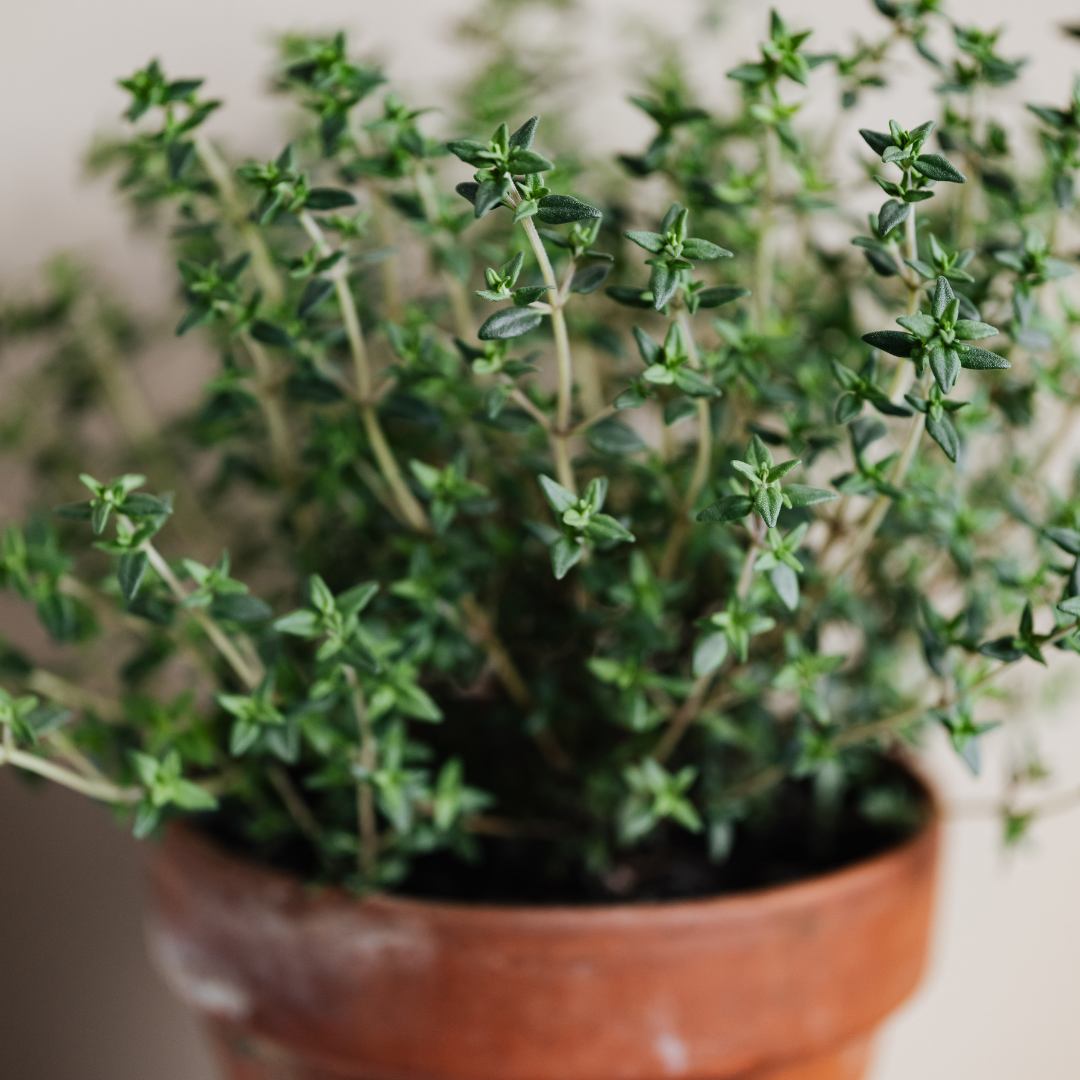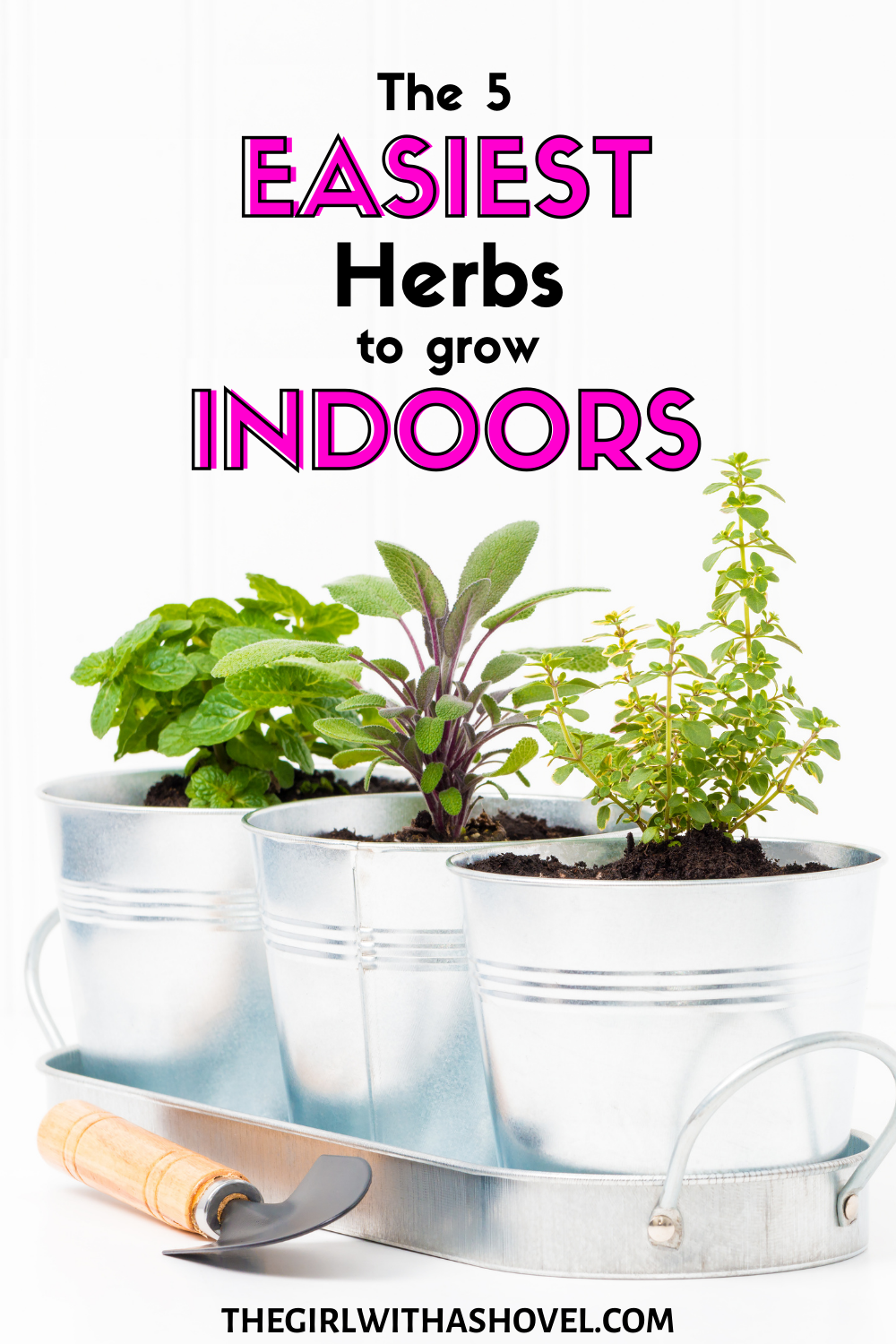In this post I’ve handpicked a variety of perfect gifts for plant-lovers, with gifts like the Valentine’s Day Plant Mug, a heart-shaped succulent planter, and a preorder-ready mini heart planter & succulent gift box, which is a thoughtful way to support your special someone’s green passion. For those looking beyond plants, options span from humorous plant stakes to unique plant-themed jewelry, ensuring that every plant enthusiast finds something to cherish this Valentine’s Day.
Struggling to find that perfectly unique Valentine’s gift for the plant lover in your life?
You want a thoughtful gift that says “I care for you”, but then maybe you want something that they would also enjoy. And you might not be the biggest green thumb yourself. But you’re in luck! …
As a seasoned horticulturist and plant parent to many of my own plant babies, I’ve become well-versed in the realm of all things houseplants, as well as all things necessary for houseplant care (and those things that are simply for pure enjoyment!). Tailoring to a wide range of personal taste and practicality, my reviews in this post are here to help you pick out the best item for your own plant lover. (Or if this is you, sneak this gift guide into your man’s briefcase! *wink!*)
So here is my list of over 50 Valentine’s Day gifts to give the plant lover in your life!
*Note: To find the links to purchase any of these gifts, check out my page, Valentine’s Day Gifts Purchasing Page.
Valentine’s Day Plants – Live Plant Gift Ideas:
1. String of Hearts Live Plant
The string of hearts plant is literally a plant with heart-shaped leaves all along each vine. This gives you a cascade of hearts trailing down the sides of your pot. And as this plant is a hoya, it enjoys brighter light, but it also needs to dry out in between watering, so this is the perfect plant for someone in a bright office, or as a nice windowsill plant. My personal favorite is this pink variegated one! It’s the perfect way to show the plant lover in your life that you love them!
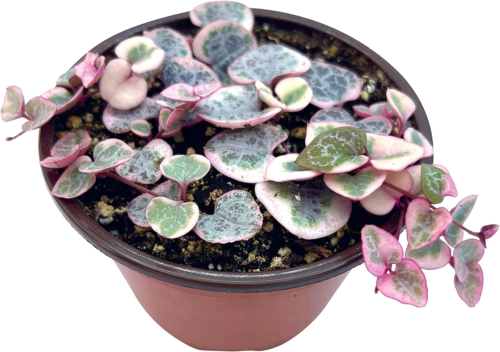
Visit the Valentines Day Gifts Purchasing Page that will show you where to find these gifts!
2. Heartleaf Philodendrons
The heartleaf philodendron is another great houseplant to give as a valentine’s day gift! The soft, heart-shaped leaves on the philodendron are a bit more full than the string of hearts plant. But that comes with its advantages as well! The heartleaf philodendron doesn’t need as much sunlight as the string of hearts, so it is a nice, more formal houseplant for locations with low to medium light. You can choose one of three main varieties: the classic green heartleaf philodendron, the bright green variegated Brazil variety, and the soft red Velvet philodendron. Any one of these three plants would make a beautiful valentines day gift for the plant lover in your life!
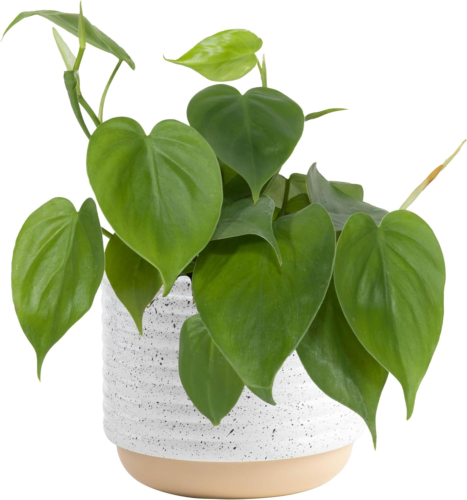
3. Hoya kerrii
The hoya kerrii is one of the most widely-sold houseplants for valentines day. This is because of their perfect heart-shaped leaves that look great, even as a single leaf in a small pot! However, something that I wasn’t aware of until I purchased one of these cute hoya hearts is that it will not grow more leaves unless the cutting it was taken from contains a portion of the stem tissue. This means that as long as you care for it, it will stay a perfect little heart leaf. But if you want something that will continue to grow and produce more leaves, then you will most likely need to purchase a hoya kerrii that has more than just a single leaf to ensure that it continues to grow. That being said, I think that this heart leaf makes the best valentine’s day gift for someone trying to keep things simple, but meaningful.
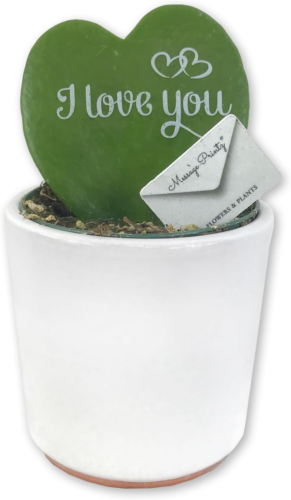
4. Succulent Planter
This is the ultimate gift for succulent lovers! These succulent planters contain a beautiful array of succulents of various textures and colors, ensuring a stunning heart-shaped planter! So if your special someone is a fan of succulents and has a bright sunny spot for these beauties, then this would make a unique gift that they will have for years to come!
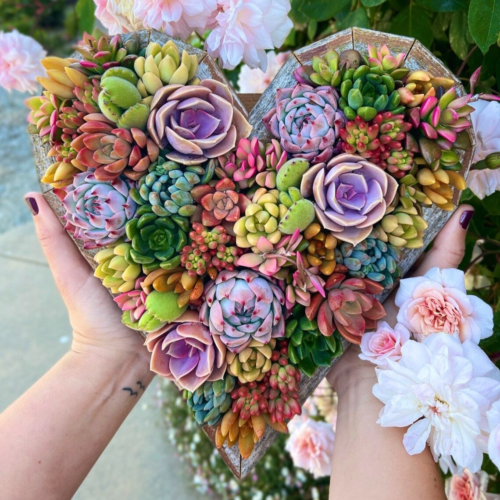
5. Pet-friendly Plants
There isn’t much better than showing your loved one that you know them and you care for what they care about. This is particularly important for plant lovers who are also animal lovers! One of the best gifts you can give one of these big-hearted people is a pet-friendly houseplant! This show them that you care about their passion, and that you listen to them enough to get a plant that won’t hurt their furry friends as well. So check out my list of pet friendly houseplants and pick one out for that caring person in your life!
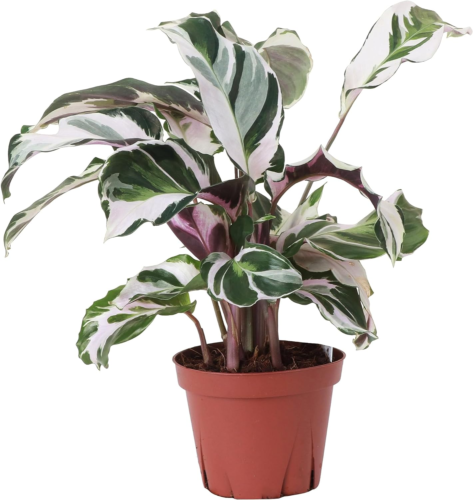
6. Carnivorous Plants
Carnivorous plants can be a lot of fun! These plants make great gifts for people who tend to be “houseplant collectors”. This is because carnivorous plants are unique and require particular care routines, but they can be worth it simply for the “cool” factor! Because who wouldn’t want to watch a plant devour that pesky fly that has been buzzing around your food all day?! This could be a great gift for men, friends, or anyone who would love a plant that beats the food chain!
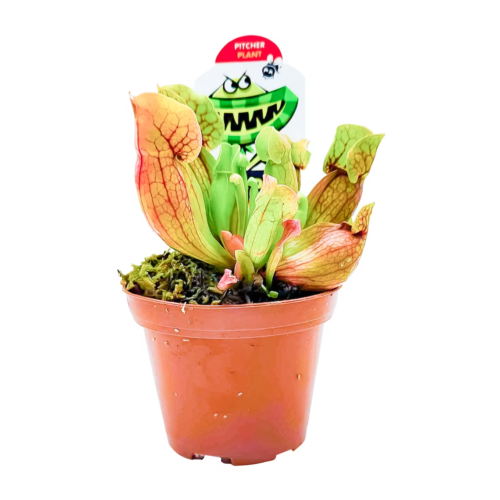
7. Air Plant Box
This particular air plant kit is a unique gift in that each one is truly one-of-a-kind! It includes a live air plant suspended over a purple agate stone (known as a stone for healing and creativity). This, along with its color vibrancy and small footprint, makes it perfect for office desks or table decor. And then, you can choose the perfect messaging for your box to ensure that it works for you. With messages ranging from “You’re My Weirdo” to “Love” to “Thinking of You” this gift works for whatever situation you might find yourself in. So order one of these beautiful air plants today!
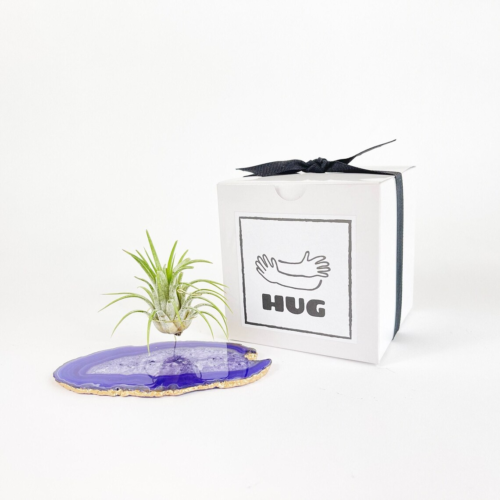
8. Moth Orchid
Moth orchids, or phaelanopsis orchids, are one of the most popular gifts given as live plants due to their beautiful blooms that can last several months! They are also relatively easy to care for and can even grow a second set of blooms shortly after finishing its first bloom. So if you’re looking for a lovely gift for a friend, or for a stunning romantic gift, consider purchasing an orchid for a flowering plant that will last for years.
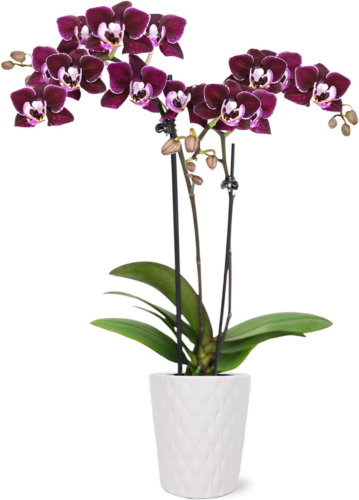
9. Red Roses
Red roses are one of the classical gifts that are sent on valentines day, and for good reason! The flower is literally the place on the plant where the male and female parts are together in one beautiful display. (In most cases… I’m not going to get technical here about flower types and plant propagation, lol!) So this is why the flower is traditionally sent as a gift to lovers, with the rose being the ultimate sign of romantic love. You really can’t go wrong with red roses on valentines day. Especially for someone who already loves plants!
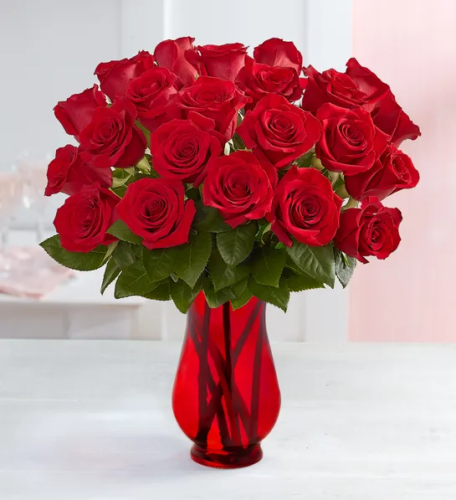
10. Blushing Bromeliad
The blushing bromeliad is a fun, unique gift for plant lovers. This is because it isn’t one of the typical beautiful plants that most people collect, but with its brilliant pinks and reds in the center, they work fabulously for this holiday! Consider placing it in a red or pink decorative pot, or a contrasting green to really make the color pop. And then in time your special someone will also be surprised with a brilliant flower stalk! This is why bromeliads are excellent gifts. They work for both houseplant lovers, as well as flower lovers with their brilliant display of year-round colors!
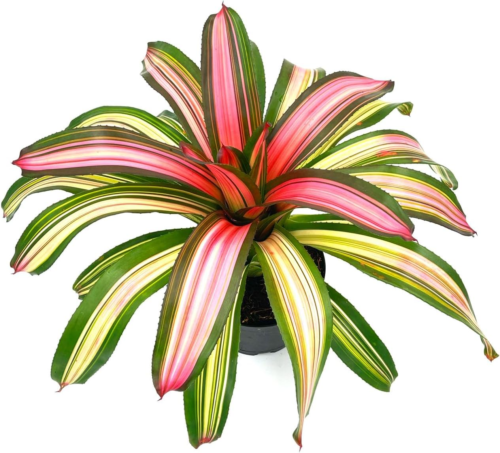
Visit the Valentines Day Gifts Purchasing Page that will show you where to find these gifts!
11. Love Fern
Any fans of “How to Lose a Guy in 10 Days”?! I know love ferns were popular before this movie, but I believe this is what really made the idea of “love ferns” take off! So if you want to show your loved one that you are committed to them in your relationship, consider getting them a love fern. And don’t go for the Boston fern (these can be difficult and messy indoors), but instead opt for an easier fern such as a Bird’s Nest Fern, Maidenhair fern, or Rabbit’s Foot Fern. These are all much cleaner houseplants and are also easier to keep alive. So consider adding a “love fern” to your relationship!
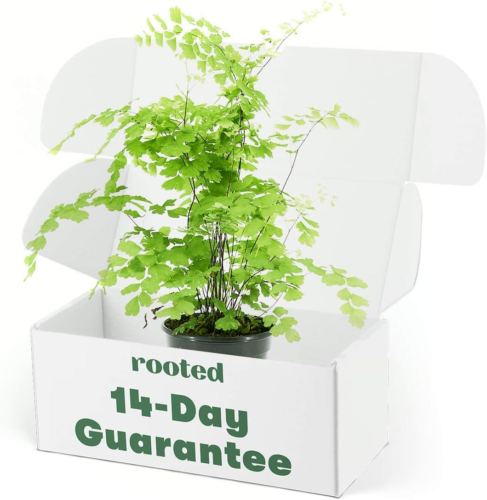
12. Tricolor Hoya Krimson Queen
The tricolor hoya ‘Krimson Queen’ is one of the best hoya plants for a valentines day gift in my opinion. This is because these beautiful hoya leaves are variegated in an amazing pink color that makes this plant absolutely stunning! It is a meaningful gift that your special someone will be showing off to all of their plant friends!
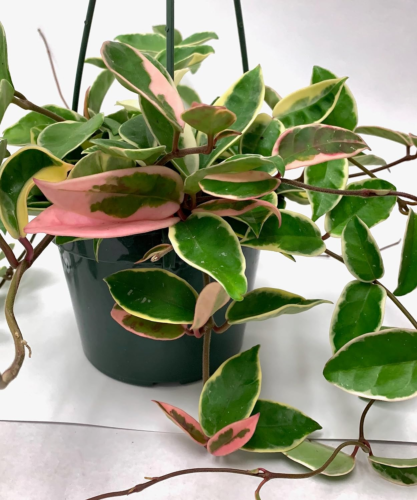
13. Plant Gift Box
For those of us who want to get something a bit larger for our loved ones, consider a plant gift box! This includes a live indoor plant, a plant-themed mug or wine glass, a bookmark, keychain, and several stickers (all gorgeous plant-themed, of course!). This plant gift box is perfect for gifting a co-worker, best friend, sibling, or even a significant other. And the best part is that the plant you receive is a surprise! So bring some houseplant joy to your plant lover’s life with this fun plant gift box!
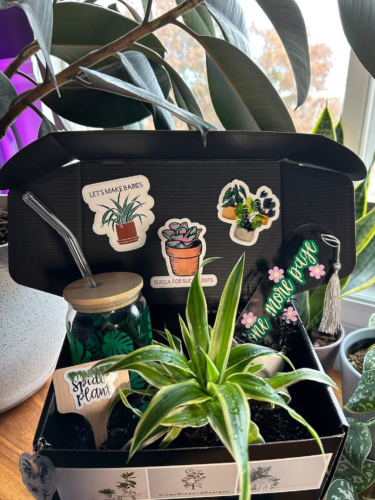
14. Hammered Hearts Live Succulent Arrangement
This live succulent arrangement is another option of succulent plants in a smaller, more upright arrangement. This is a beautiful option for those who might not have the space for the larger heart-shaped planter. But this arrangement is still not without its own charm. The metallic hammered hearts add a 3-D depth to this beautiful arrangement of succulents and is sure to be a hit with your special someone!
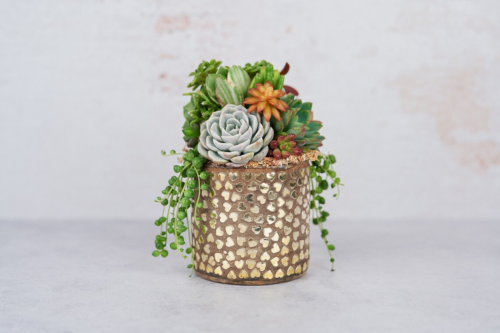
15. Blooming Kalanchoe
Kalanchoe is another very popular houseplant that is sold widely during this season. This is because these plants can bloom for a long period of time and come in a wide range of reds, pinks, and creams. These are perfect for valentine’s day gifts, although I would recommend that they be used more as a friendly gift. If you are looking for a romantic plant, it would be one of the orchids or roses. But they do make a beautiful appreciation gift for someone who is special to you.
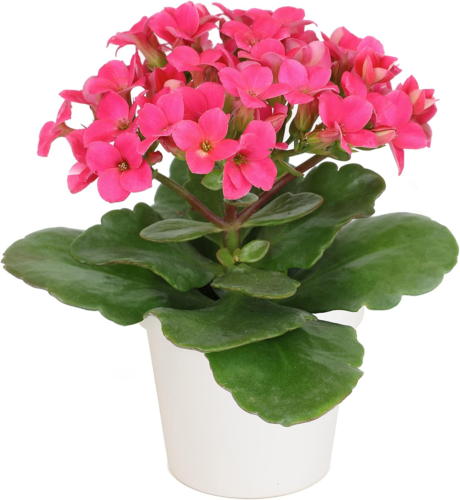
16. Gift Card
If you know your special someone would love to have a nice houseplant of their own, but you aren’t sure about which new plants they would like, a gift card can be your best gift. Try to find one of their favorite nurseries, or maybe even a personalized coupon to treat them to a plant of their choice at their favorite plant store! Either one would be a great gift that could then turn into a fun plant shopping date that would leave your plant lover excited for your next outing together!

17. Rose Succulent – Aeonium Aurea
The Rose Succulent, scientifically known as Aeonium Aurea, is an enchanting addition to any plant collection. This particular species of succulent boasts a vibrant rose-like appearance that is sure to captivate anyone who lays eyes on it, including your special someone! And by including a special message, such as “Stay Beautiful” or “Grow Strong”, you can personalize this gift to work for any situation you need for this Valentine’s Day!
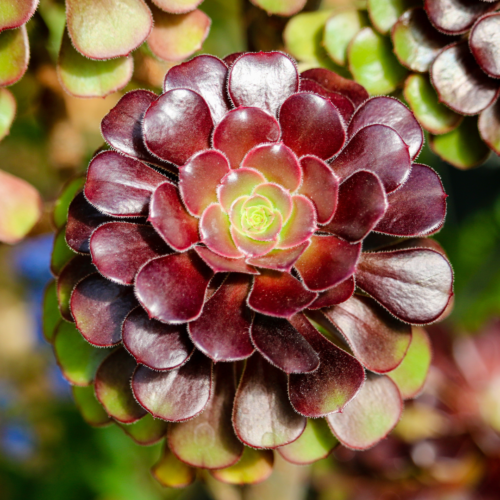
18. “You are my Happy Place” Succulent Box
This adorable succulent box includes a live succulent, terracotta pot in the color of your choice, and a heartwarming message that you can handpick from a wide range of choices. These are perfect for loved ones, children, siblings, and even as appreciation gifts to teachers, coworkers, or role models in your life. You can also choose to add on a wide range of items including bath bombs, scented candles, art prints, or even small candies. This is truly a great gift to send to anyone on your list of plant lovers this Valentine’s day!
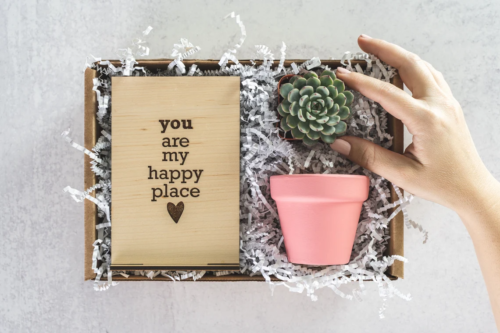
19. Plant Parenthood Monthly Subscription Box (Live Plant)
For those who can’t get enough of plants, we have the Plant Parenthood Monthly Subscription Box. This box is designed to keep your plant enthusiast engaged with new varieties each month. Packed with surprise goodies such as rare plant cuttings, plant care essentials like fertilizers and moss poles, and even exclusive plant-related art prints or decorative pots. Each subscription box comes with detailed care instructions for every item included so that caring for the newly acquired additions becomes a breeze. Your plant lover will be thrilled every single month they receive their box. Trust me… this is one item I would LOVE if my hubby got it for me! (maybe I’ll casually send him this latest post, lol!)
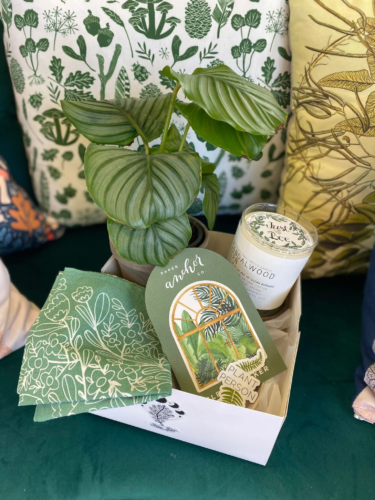
Valentine’s Day Gift Ideas for the Gardener:
Visit the Valentines Day Gifts Purchasing Page that will show you where to find these gifts!
20. Bonsai Kit
Bonsai kits are a fun project for those who love to work with their hands. These kits include everything you need to create a beautiful bonsai tree. And you can often find them on Amazon prime to include free shipping!
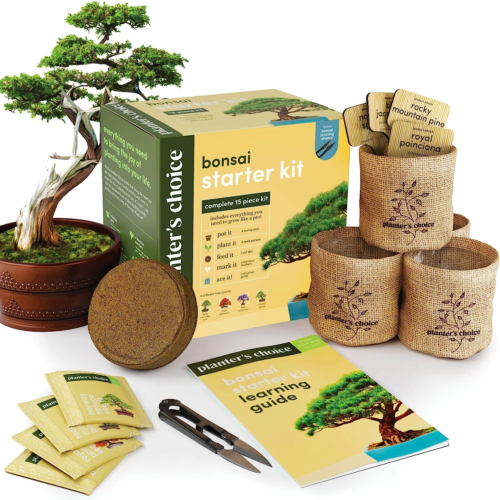
21. Funny Plant Stakes
While a small gift, these funny plant stakes make a great gift for those who love to laugh! The punny plant jokes will always bring a smile to their face, as well as help them keep their seedllings straight! So if your special someone loves to laugh as their love language, then consider getting them these funny plant stakes!
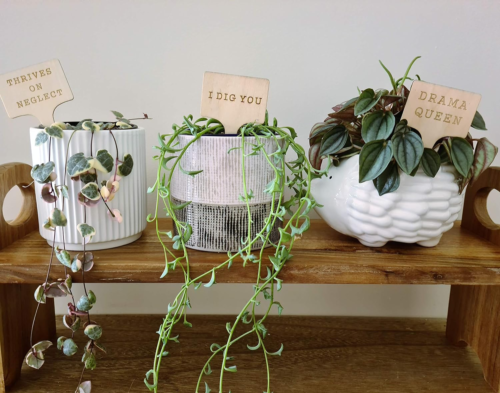
22. Herb Garden Kits
For those who love to cook with fresh ingredients, herb garden kits are not only fun, but they are also extremely helpful. These are one of the easiest ways to grow small edible plants or herbs indoors. These herb gardens provide both the long hours of light that most herbs need, but they also provide steady water, since most of these kits are hydroponic and can even let you know when water levels are getting low. These kits are really a set-and-forget method to gardening!
Check out my review of the Best Herb Garden Kits!
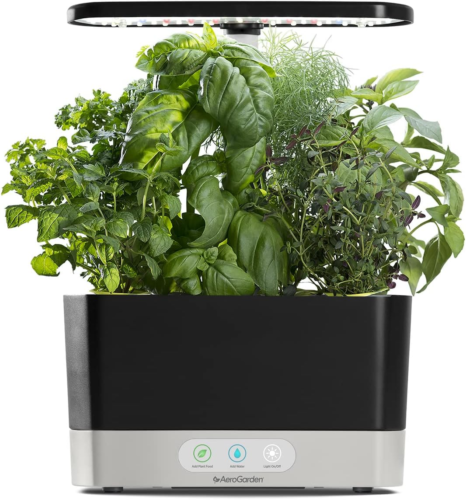
23. Gardener of the Year Coffee Mug
This cute little mug is a great way to show your love for the plant person in your life! This pot mug even comes with its own little mini shovel to stir in your sugar and cream! Because every gardener needs their trusty shovel. Especially the gardener of the year!
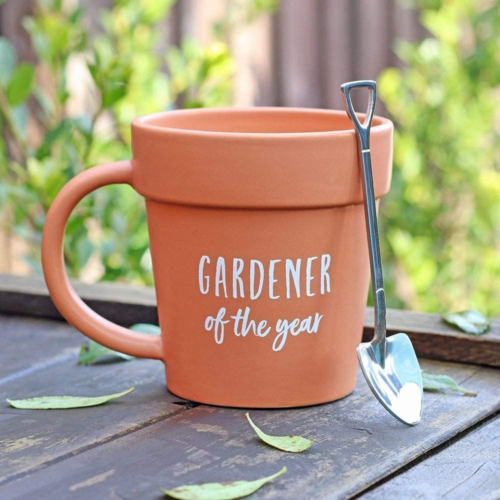
Gift Ideas for the Practical Planting Essentials:
24. Air Plant Moon Pot
This air plant moon pot is a lovely decor piece to place your plants in! I feel that this might be too small to put a potted plant inside, but it would look amazing with several colorful air plants inside! So if your plant lover enjoys their tillandsias, then consider gifting them this moon pot to place their air plants inside!
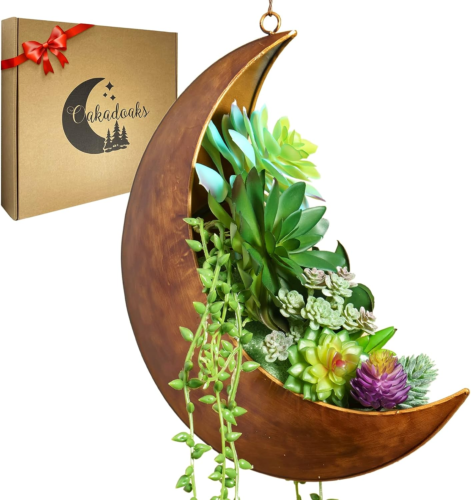
25. Inspirational Propagation Station
These propagation stations are not your typical propagation station! This one comes along with messages of love and support that reminds your loved one of your care for them every time they see their plants rooting. This is a gorgeous gift for the special plant lover in your life!
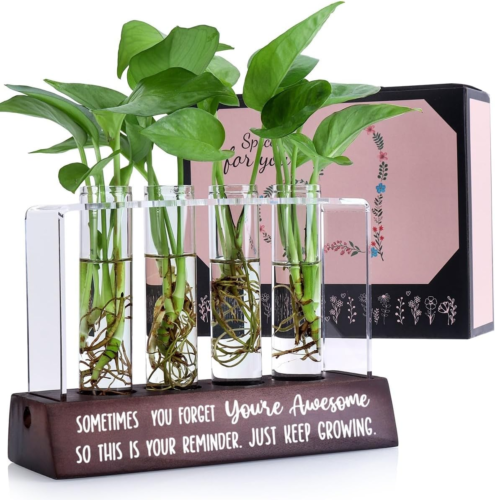
26. Baby Groot Pot
Add character to your plant lover’s collection with this adorable Baby Groot pot! Inspired by the popular Guardians of the Galaxy character, this little pot is perfect for small succulents or cacti. Not only will it bring a smile to their face, but it will also add a whimsical touch to their indoor garden.
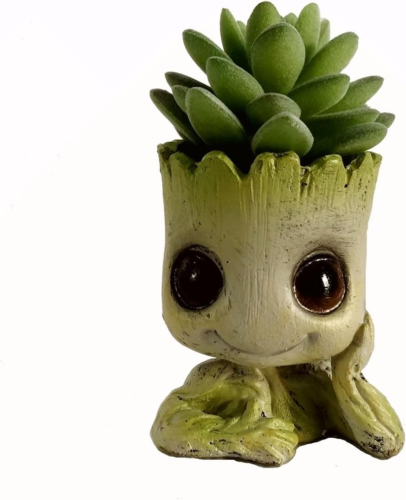
27. Eco-friendly Plantable Pencils
For the eco-conscious plant enthusiast, these plantable pencils are both practical and sustainable. Made from recycled paper and graphite, each pencil contains seeds at its tip. Once they’re done using the pencil, they can simply plant it in soil and watch as herbs or flowers grow in its place. It’s a unique gift that combines functionality with environmental consciousness.
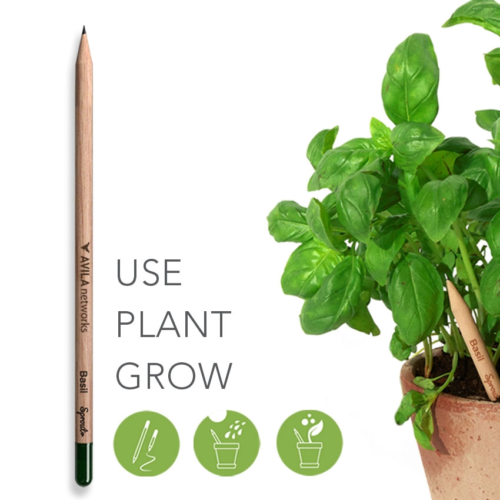
28. Cozy Pot Holding Drink Planter
Perfect for those who love to relax with a hot cup of tea or coffee, this cozy pot holding drink planter is the ultimate gift. Handcrafted from ceramic, this unique gift is sure to be a conversation starter and a favorite addition to their home decor.
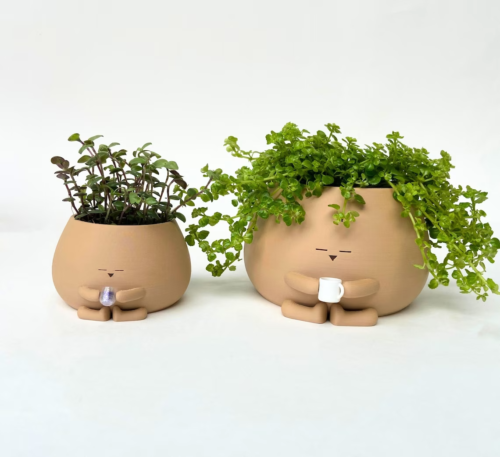
29. Best Wife Ever Pot
This special edition Best Wife Ever pot is designed to make your wife feel extra loved and appreciated. Not only is this gift practical and aesthetically pleasing, but it also serves as a constant reminder of your love and admiration for your amazing partner.
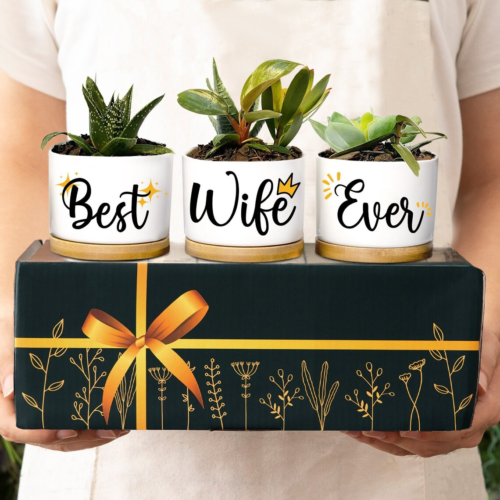
30. Gardening Tools and Plant Mat
Encourage your special someone’s green thumb and help them cultivate a beautiful garden with this set of high-quality gardening set of tools and a plant mat. This gift includes everything a gardener would need to care for their plants, including the plant mat that would help them keep everything clean and organized! So if you’re wanting to encourage their gardening passion, consider getting them this inclusive gardening set!
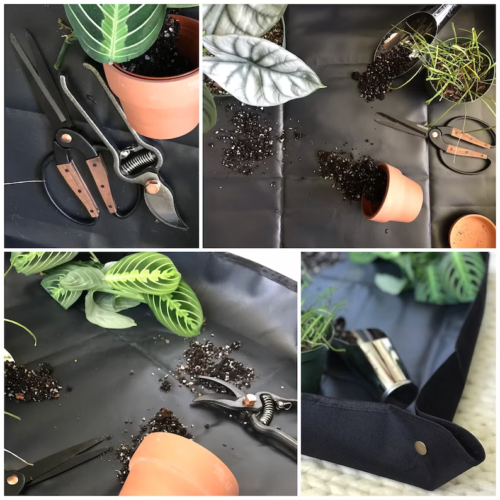
31. Hanging Plant Shelf
If your plant enthusiast has run out of space on their window sills and shelves, this hanging plant shelf is the perfect solution. Designed with style in mind, this shelf effortlessly suspends from the ceiling or wall, providing additional room for their beloved greens to thrive. With its modern design and sturdy construction, this gift will not only enhance their plant collection but also complement any home decor.
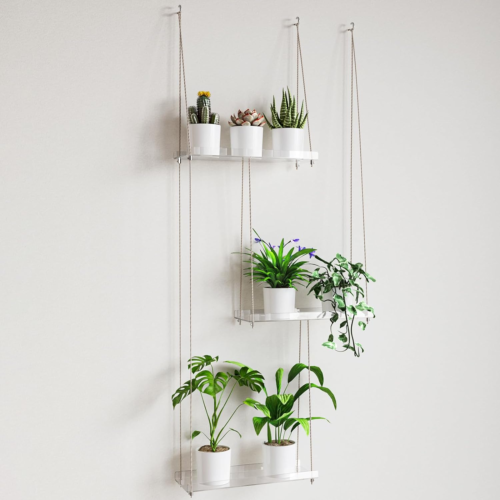
32. Floating Bonsai Planter Pot
This modern floating bonsai planter will make any man proud to show off his latest creation! The innovative design of this planter allows the bonsai tree to hover above the base, making it seem weightless and majestic. Any plant lover would be impressed when they receive this gift, and immediately want to show it off to their friends!
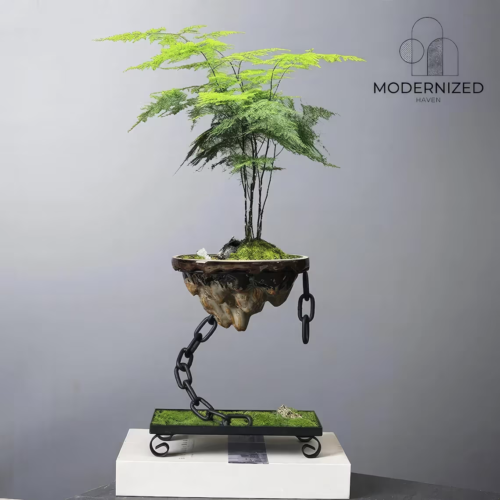
33. Personalized Plant Pot
Nothing says I care about you more than a thoughtful, personalized gift. This plant pot allows you to add your loved one’s name or a special message, making it truly unique and sentimental. Whether they use it to hold their favorite indoor plant or another beloved green companion, this personalized plant pot is sure to brighten up any space and serve as a lovely reminder of your love and thoughtfulness.
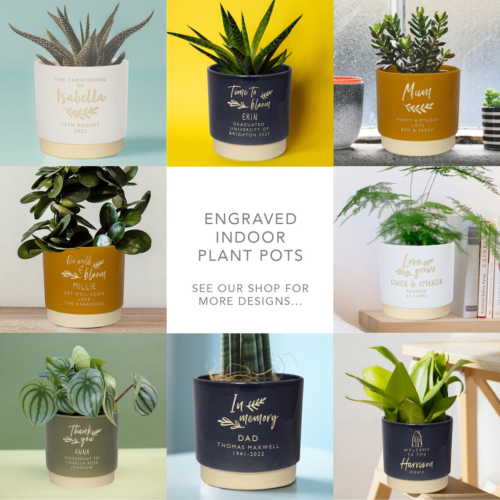
Fun and Romantic Plant-Themed Gift Ideas:
Visit the Valentines Day Gifts Purchasing Page that will show you where to find these gifts!
34. Tiny Terrarium Necklace
This tiny terrarium necklace is a unique and fashionable way for your plant-loving friend or loved one to show off their green thumb wherever they go. It features a small glass globe filled with a tiny living plant, creating an enchanting mini garden to bring with you wherever you go! Not only does it make a beautiful accessory, but it also serves as a constant reminder of your love and support of their own hobby.
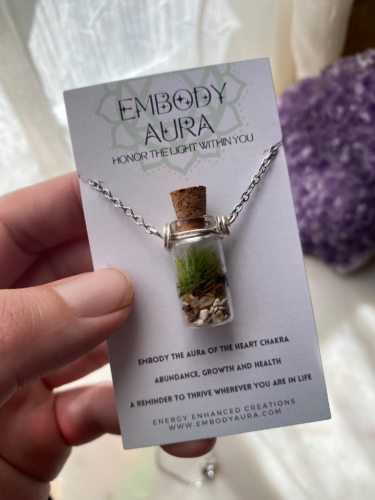
35. Sage Leaf Ring
This Sage Leaf Silver Ring is the perfect accessory for any plant enthusiast. Its delicate design features a silver sage leaf, adding a touch of nature-inspired elegance. Made from sterling silver, this ring is not only beautiful but also durable, ensuring it will last for years to come. Consider buying this ring as a romantic gift for your significant other as a sign of your undying love. <3
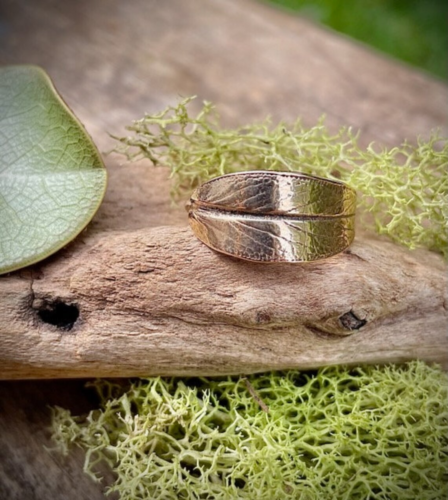
36. Variegated Monstera Albo Necklace
Another unique gift idea for plant lovers is a variegated monstera albo necklace. This trendy accessory features a tiny replica of the highly coveted variegated monstera albo leaf, known for its beautiful cream-colored patches on dark green foliage. The necklace will leave your siignificant other utterly stunned at your thoughtful and beautiful gift.
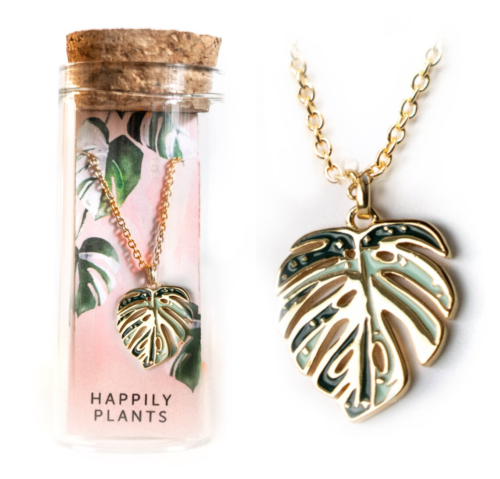
37. Plant-themed Phone Case
For those plant enthusiasts who can’t get enough of their leafy friends, why not surprise them with a plant-themed phone case? These cases are designed with intricate illustrations or photographs of various plants, flowers, or succulents that will surely make their phone stand out in style. Not only will it protect their device from scratches and bumps, but also showcase their botanical passion wherever they go.
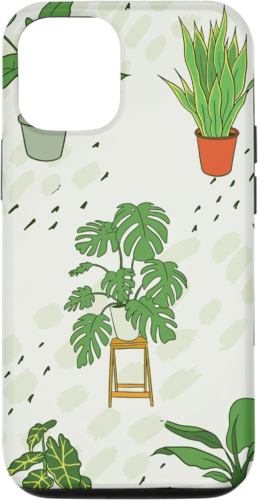
38. Scented Candles
Scented candles are a wonderful addition to any plant lover’s space, creating a calming and soothing environment. Choose scents that complement the plants in their collection or select ones known for their relaxing properties, such as lavender or chamomile. These fragrant candles will not only enhance the ambiance but also provide an opportunity for your loved one to unwind and relax while surrounded by their beloved greenery. And consider one of these plant puns to make your valentine laugh every time they see their adorable plant-themed scented candle!
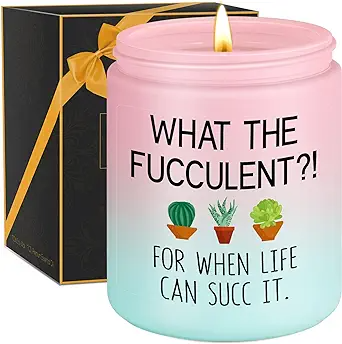
39. Nature-inspired Wall Art
For plant enthusiasts who love to bring nature indoors, consider gifting them some nature-inspired wall art. Whether it’s a beautiful landscape painting or prints of botanical illustrations, these pieces can add an extra touch of greenery even if there isn’t enough space for more plants. The vibrant colors and intricate details will surely captivate the recipient and serve as a constant reminder of their passion for all things botanical.
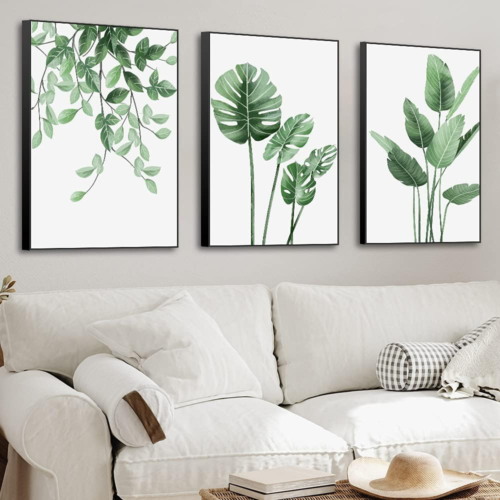
40. Crazy Plant Lady Gift Set
The Crazy Plant Lady Gift Set is a dream come true for any plant enthusiast. With a variety of items that celebrate the beauty and love of plants, it’s sure to bring joy to your plant lover’s life. This gift set contains a plant-themed tote, journal, pen, mug, socks, and a keychain… all houseplant-themed! If your special someone is truly a crazy plant lady, then I’m sure she will love some merchandise to display her crazy love of plants!
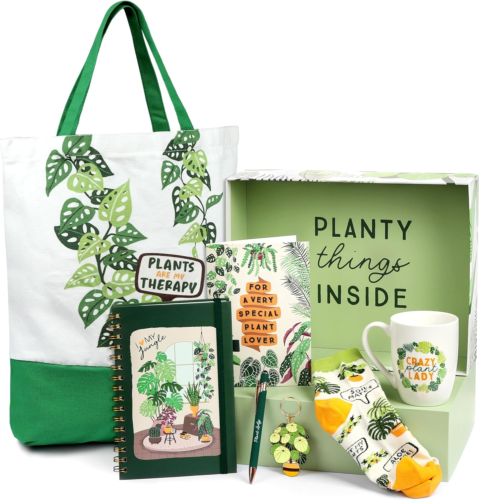
41. Succulent Heart T-Shirt
This shirt is perfect for any succulent lover! Featuring a heart-shaped design made up of various succulents, this t-shirt is stylish and represents the love for these unique plants. Made from soft and breathable fabric, it ensures comfort all day long. Whether our crazy plant lady wants to show off her botanical obsession or simply add a touch of green to her wardrobe, this Succulent Heart T-Shirt will be a hit! Available in different sizes and colors, there’s an option for everyone.
42. Plant Alphabet Blanket
From the healing Aloe Vera to the vibrant Zebra Haworthia, every plant featured on this blanket is intricately illustrated and accompanied by its name. Made from soft, flannel material, this Plant Alphabet Blanket is perfect for snuggling up with a cup of tea and learning about different plant species. Whether used as a statement piece on a couch or as an educational tool in a nursery, this blanket will surely spark curiosity and admiration for the natural world. I find that this is an especially perfect gift for teachers or parents with young children.
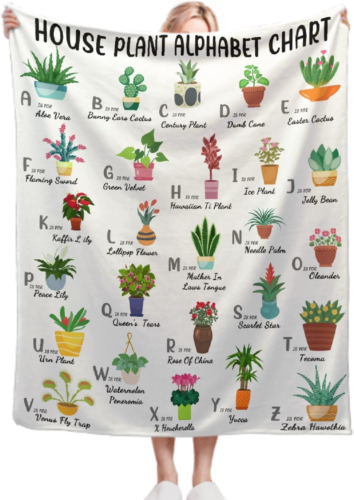
43. Lego Orchid Set
The Lego Orchid Set is a fantastic gift option for plant and LEGO enthusiasts. This one-of-a-kind set allows you to build your very own orchid flower using LEGO bricks. The intricate details of the petals and leaves make it look incredibly realistic, even from a distance. Once assembled, this LEGO orchid can be displayed on a shelf or desk, bringing a touch of natural beauty into any space. Your puzzle-loving loved one will enjoy every minute of this hands-on gift!
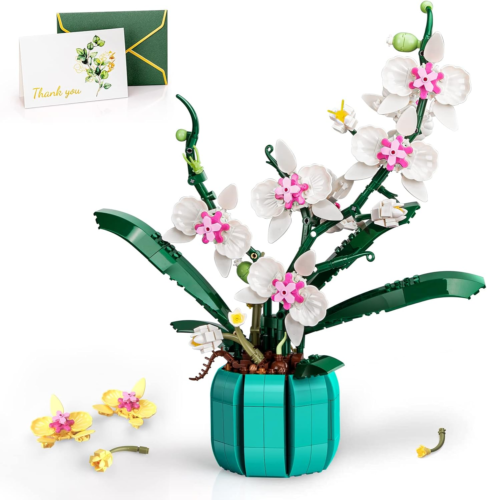
Visit the Valentines Day Gifts Purchasing Page that will show you where to find these gifts!
44. Plant Daddy T-Shirt
The Plant Daddy T-shirt is the perfect shirt for any plant-loving dad. With a fun and catchy design, it proudly showcases his love and dedication to taking care of his leafy green friends. Made from soft and comfortable fabric, this t-shirt is both stylish and durable, making it ideal for everyday wear or gardening adventures. Available in a variety of sizes, it’s suitable for all plant dads out there. Whether he’s potting plants or pruning leaves, this Plant Daddy T-Shirt will make him feel like the ultimate plant superhero.

45. Plant Daddy Baseball Hat
Use the Plant Daddy Baseball Hat to complete your plant daddy’s look! Whether he’s out in the backyard or running errands, thishat will keep him looking cool and feeling proud of his green thumb skills. Pair it with the Plant Daddy T-Shirt for a complete plant-inspired ensemble that will make heads turn and fellow plant enthusiasts envious. Give your hubby the gift of style and passion with these must-have accessories for any true plant daddy!
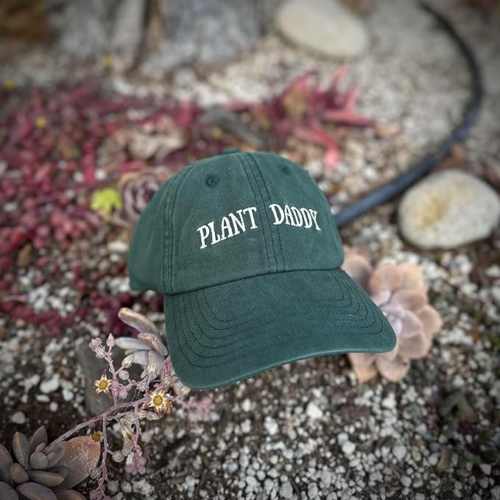
46. Sun Catcher Plant Stake
The Sun Catcher Plant Stake shows off a beautiful dangling gemstone. This gemstone pendant hanging from the stake glimmers and shines when sunlight catches it, creating a mesmerizing effect as it reflects rays of light in different colors. This enchanting display will definitely be a show-stopper and will bring a smile to your plant lover’s face every time they see it shine. Pair it with a romantic quote about how they are the sun in your darkest days, and you’ve got a beautiful, romantic, and heartfelt gift your special someone will absolutely love!
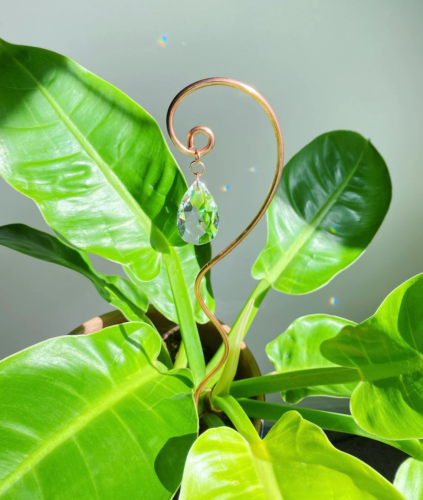
47. Stained Glass Gnome Plant Stake
The Stained Glass Gnome Plant Stake adds a whimsical touch to any garden or potted plant. This adorable gnome design is made from colorful stained glass, creating a vibrant and eye-catching display. The sunlight illuminates the stained glass, casting beautiful patterns of light and color onto the surrounding area. It’s as if this little gnome is bringing joy and magic into your loved one’s garden.
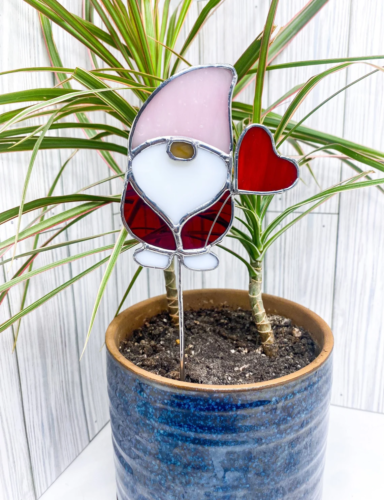
48. Silver Olive Leaf Ring
The olive tree is an ancient symbol of peace and friendship. It also has Roman and Jewish symbolism of protection and the divine power. This silver olive leaf ring can be a message to your loved one of your friendship and love. This is a beautiful gift to any plant lover that you can make special and unique between the two of you.
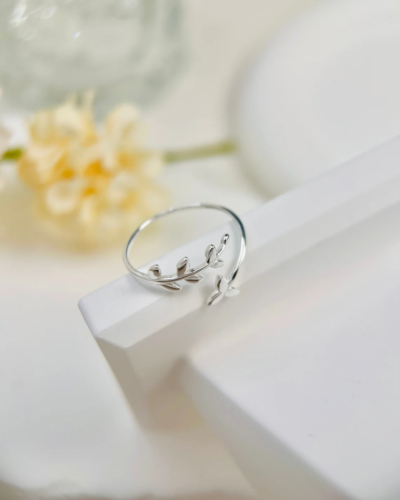
49. Wish Necklace
This wish necklace is perfect for someone who loves magical and meaningful jewelry. The delicate necklace features a glass pendant filled with a dandelion seed, (or a wish), symbolizing hope and the power of dreams coming true. This wish necklace will surely bring joy to your loved one’s heart every time they wear it close to their chest. Make it even more personal with a note about how they made your wishes come true, or name the wish and include a promise that you will achieve that wish together. The possibilities of meaning behing this gift are endless, with each option being more personal and romantic than the last.
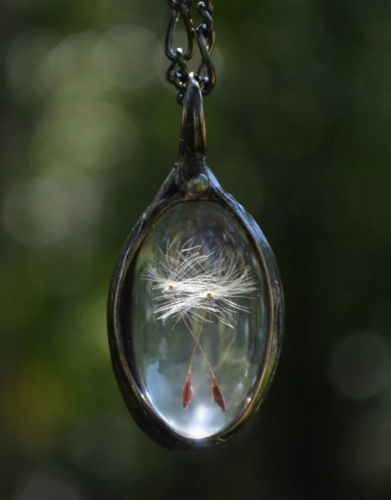
50. Houseplant Pot Decor
This houseplant pot decor makes it appear as if brightly colored octopus arms are swirling out of the plant. This valentine’s day gift is perfect for the plant lover who also loves to laugh! Not only does this unique decoration showcase your partner’s love for plants, but it also reflects their joyful personality. It serves as a reminder that life should be filled with laughter, even in the smallest details. Every time they water, this charming gift will make them feel special and appreciated not just on Valentine’s Day but every day they smile at their magnificent octopus-infused plant!
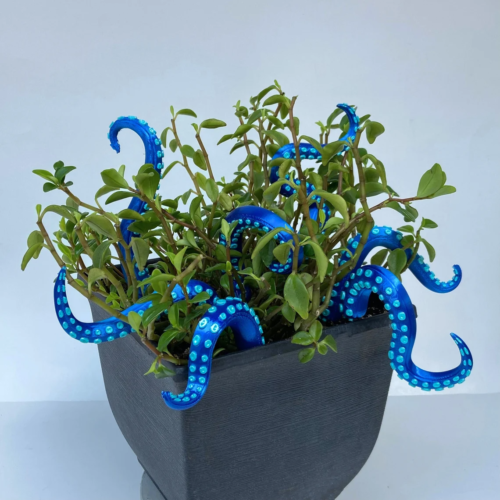
51. Plant-Themed Puzzle Set
For those who love puzzles just as much as they adore plants, this Plant-Themed Puzzle Set is an ideal gift. With its assortment of botanical illustrations and assortment of colorful plant leaves, putting together these puzzles becomes an immersive journey into nature’s wonderland. From bromeliads to begonias, each puzzle is carefully crafted to captivate both the eyes and mind.
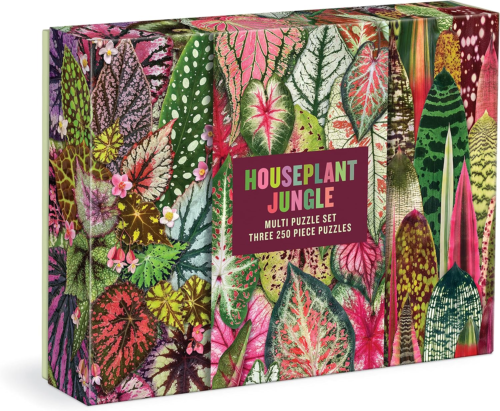
52. Plant a Kiss Book
This is a gorgeous book about planting kindness and reaping what you sow. It is a beautiful gift for any plant parent who is also a parent to young children, or to gift to a young child or a teacher. Because who wouldn’t want a cute book with a great message, that also talks about planting things!
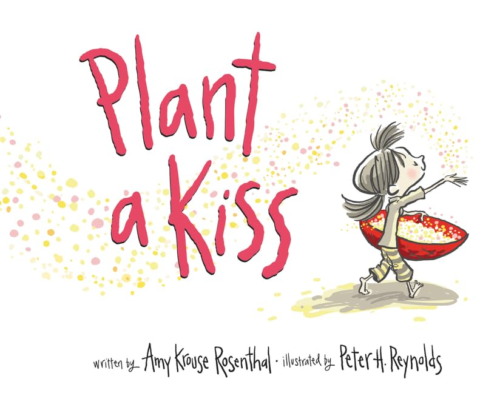
In Closing: The Perfect Gift For Your Loved One
With a wide array of over 50 thoughtful and delightful Valentine’s Day gifts for plant lovers, our top picks are tailored to surprise and enchant any plant enthusiast on this special day. Some things to consider when purchasing your gift:
- Consider maintenance, aesthetic, and the personal touch when choosing a plant-related gift.
- If selecting a live plant, consider the space that they have available, whether they need a small office plant, or they would welcome a larger houseplant.
- Don’t hesitate to explore alternative gifts that cater to plant lovers, such as herb garden kits, scented candles, or unique plant-themed jewelry.
And remember to visit the page Valentines Day Gifts Purchasing Page to find these amazing gifts!
This Valentine’s Day, let your gifts reflect the growth and beauty of your relationship with selections that resonate with your loved one’s passion for plants. From unique mugs, heart-shaped planters, to customized succulent boxes, there’s plenty of choices to ensure your gift brings a smile to your valentine’s face this year!
Valentine’s Day Gifts for Plant Lovers FAQs
What makes a gift appropriate for a plant lover on Valentine’s Day?
A gift that caters to a plant lover’s passion on Valentine’s Day should preferably have a personal touch that resonates with their love for plants. Such gifts often incorporate plant or nature-inspired elements, can involve an aspect of plant care, and ideally symbolize growth and nurturing – much like love in a relationship. Plant-themed gifts like special planters, botanical jewelry, or even a new plant to care for are often well-received.
How can I ensure the plant gift will be delivered on time for Valentine’s Day?
To ensure timely delivery of your plant gift for Valentine’s Day, consider ordering well in advance, especially for custom items that require preorder. Checking the seller’s shipping policy and deadlines for Valentine’s deliveries is also crucial. Always look for vendors that guarantee delivery by or before the special day, and consider backup options if uncertain about shipping times.
What are some low-maintenance valentine’s day plant gifts?
Low-maintenance plant gifts are ideal for those who love plants but may not have much time for upkeep. Succulents, air plants, and certain types of cacti make perfect options, as they require minimal water and care. Look for gifts like a succulent arrangement in a heart-shaped planter or a set of air plants that can be creatively displayed with minimal fuss.
Are there any pet-friendly plant options for Valentine’s Day?
Yes, there are numerous pet-friendly plants that make great Valentine’s Day gifts. Some safe options include spider plants, moth orchids, and certain varieties of ferns. When choosing a plant gift for a pet owner, it’s essential to ensure that the plant is non-toxic to their animals to keep both the recipient and their pets happy and safe.
Can I find plant-themed gifts that aren’t actual plants?
Certainly, for those who prefer to give a lasting gift that doesn’t require plant care, consider plant-themed items such as botanical prints, plant lover apparel, scented candles with floral or earthy scents, or even plant-inspired jewelry. These types of gifts can still capture the essence of a plant lover’s passion without the need for watering and maintenance.


